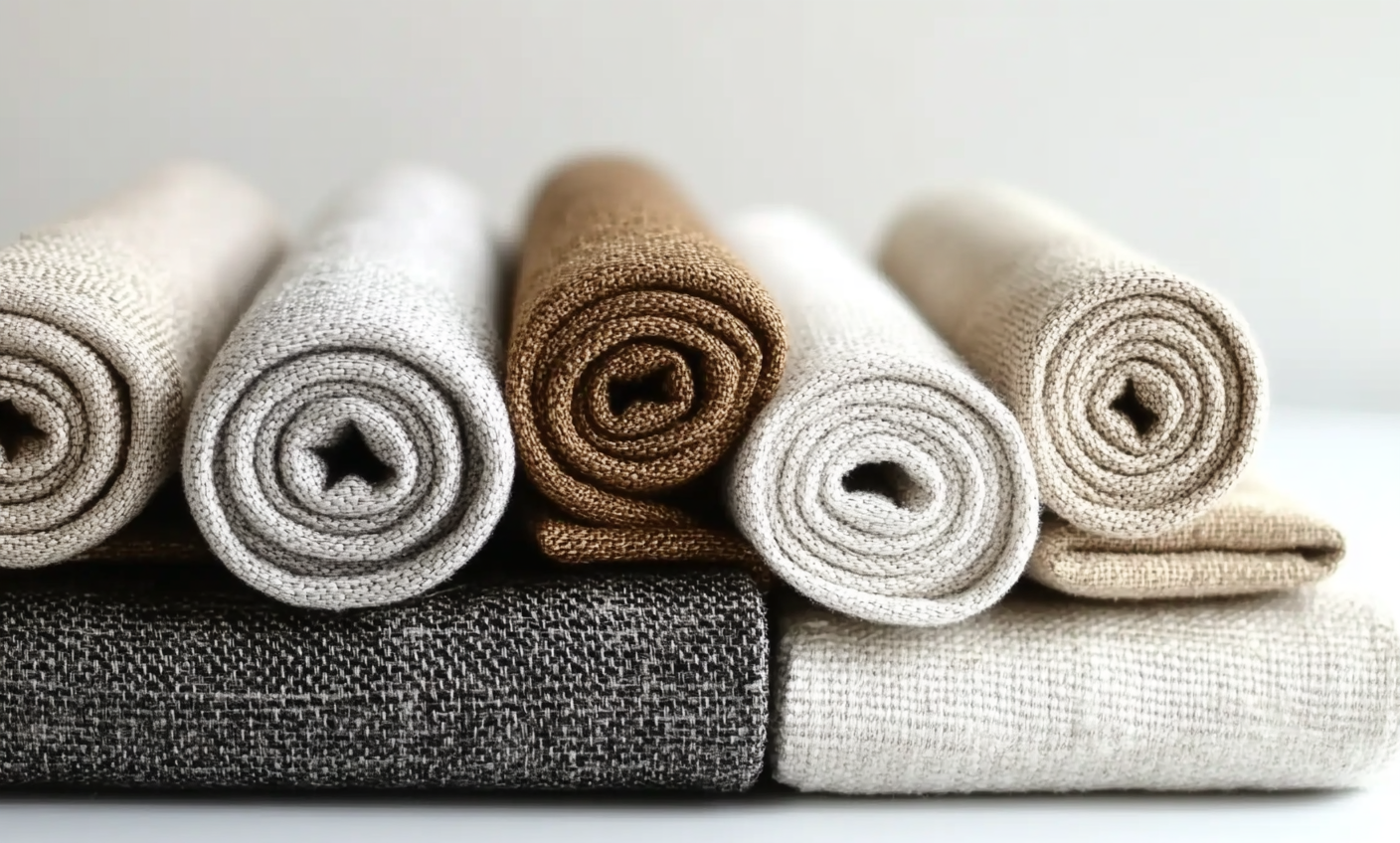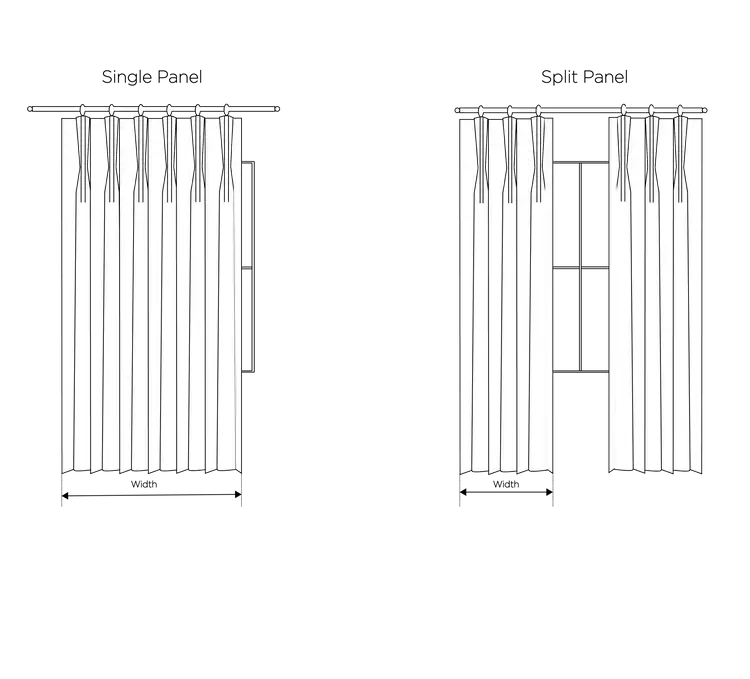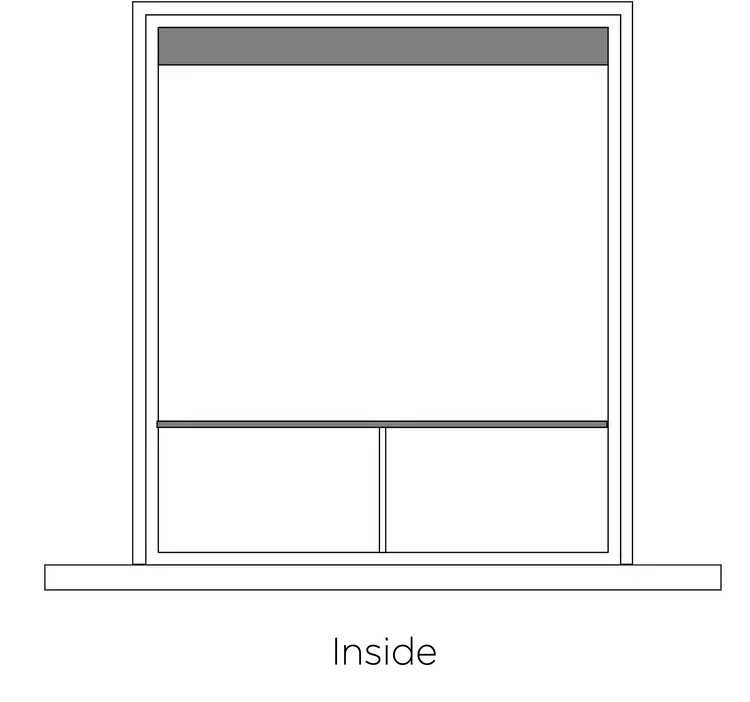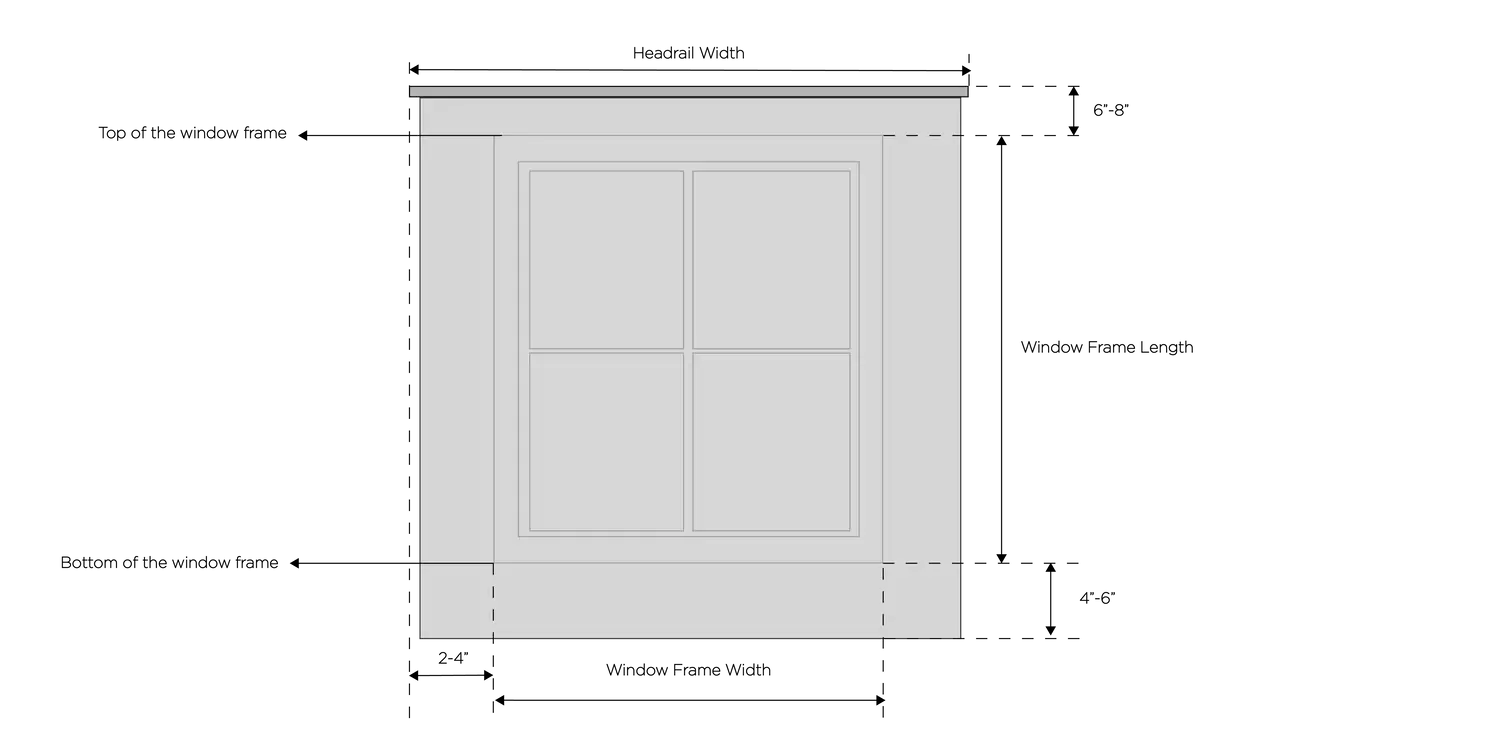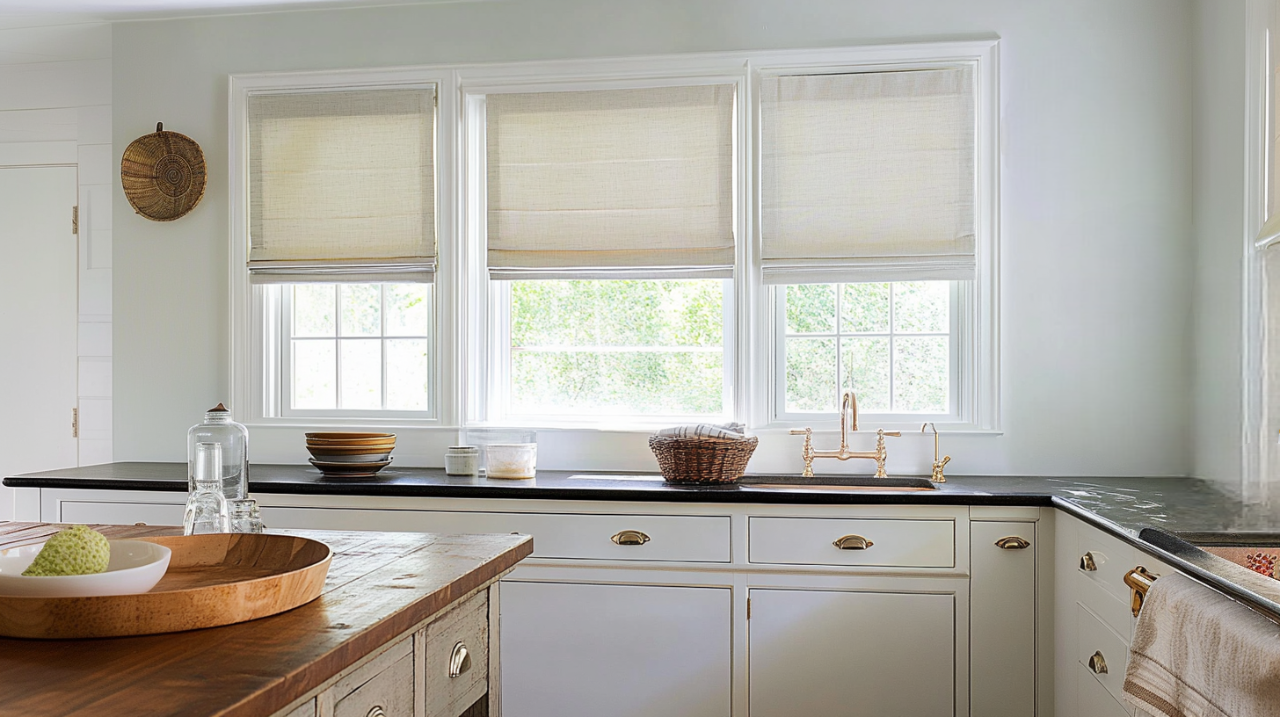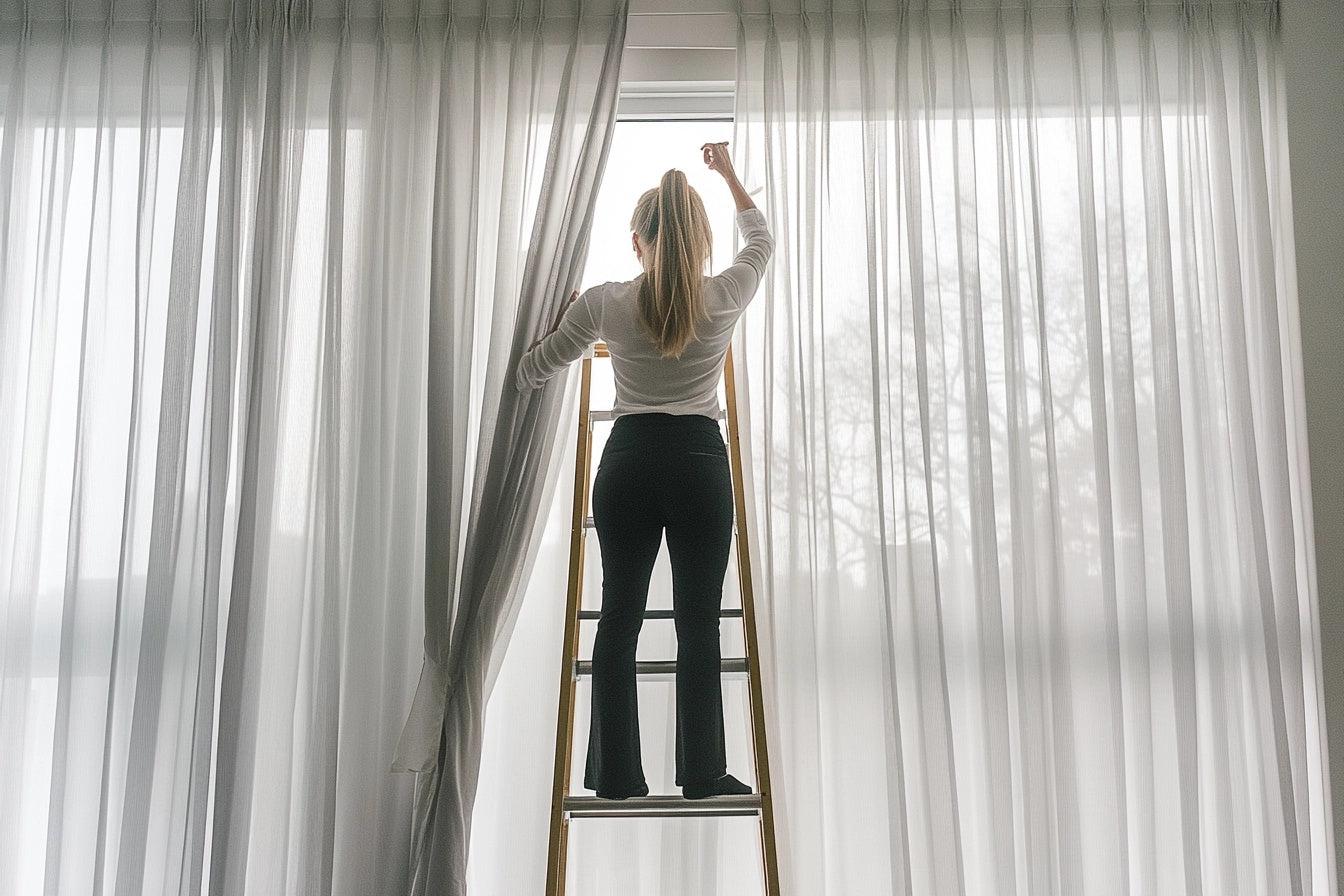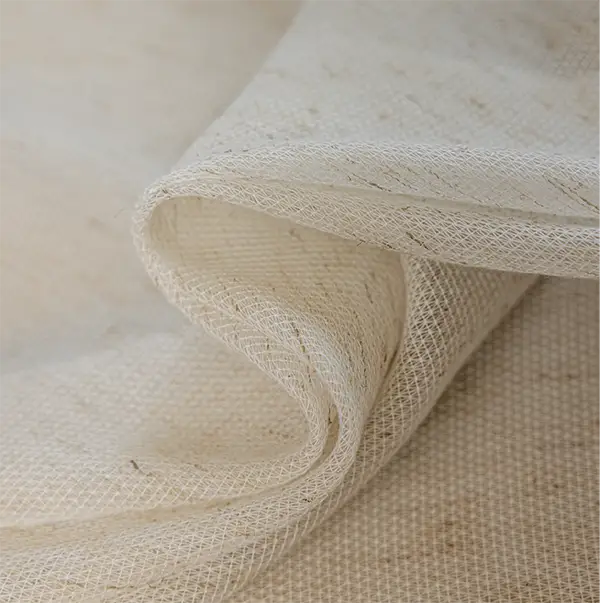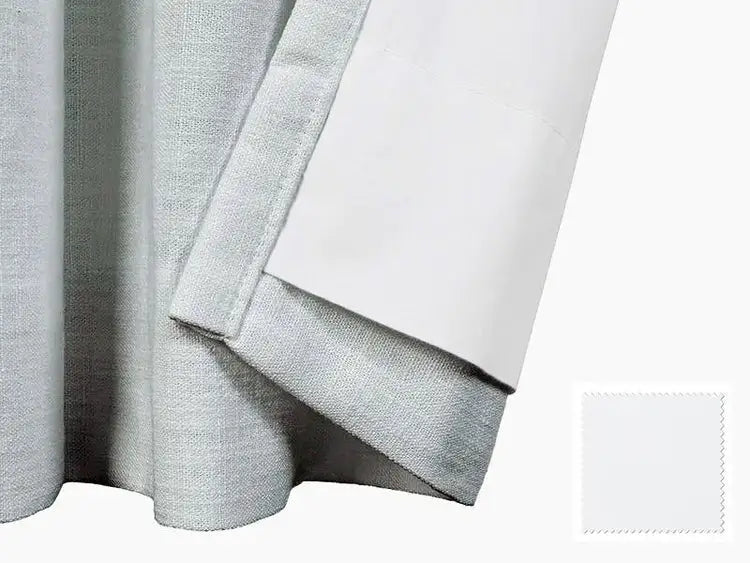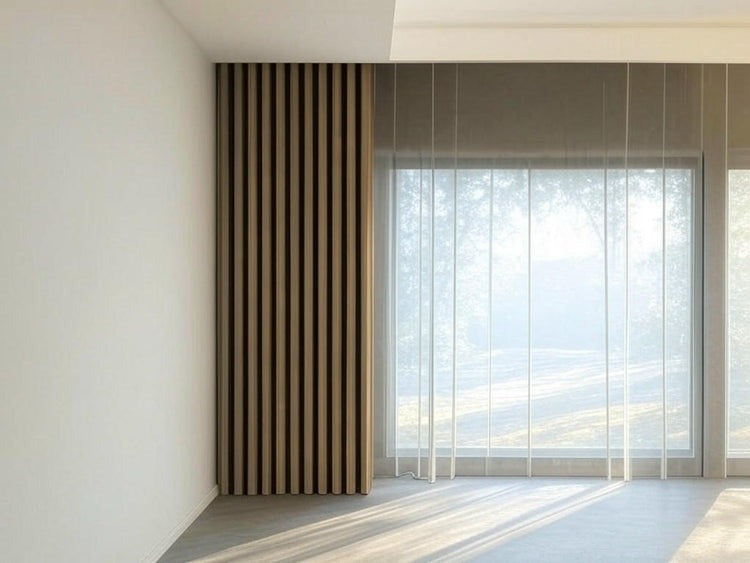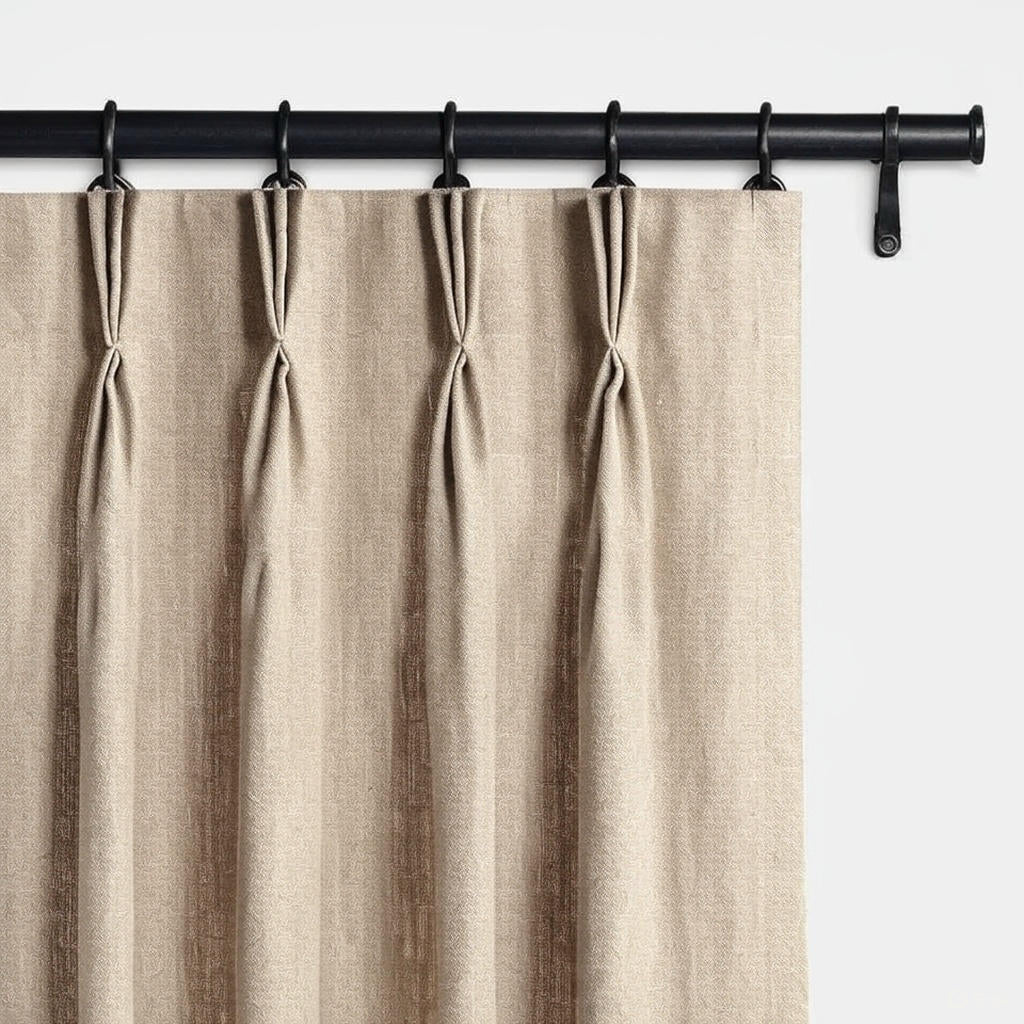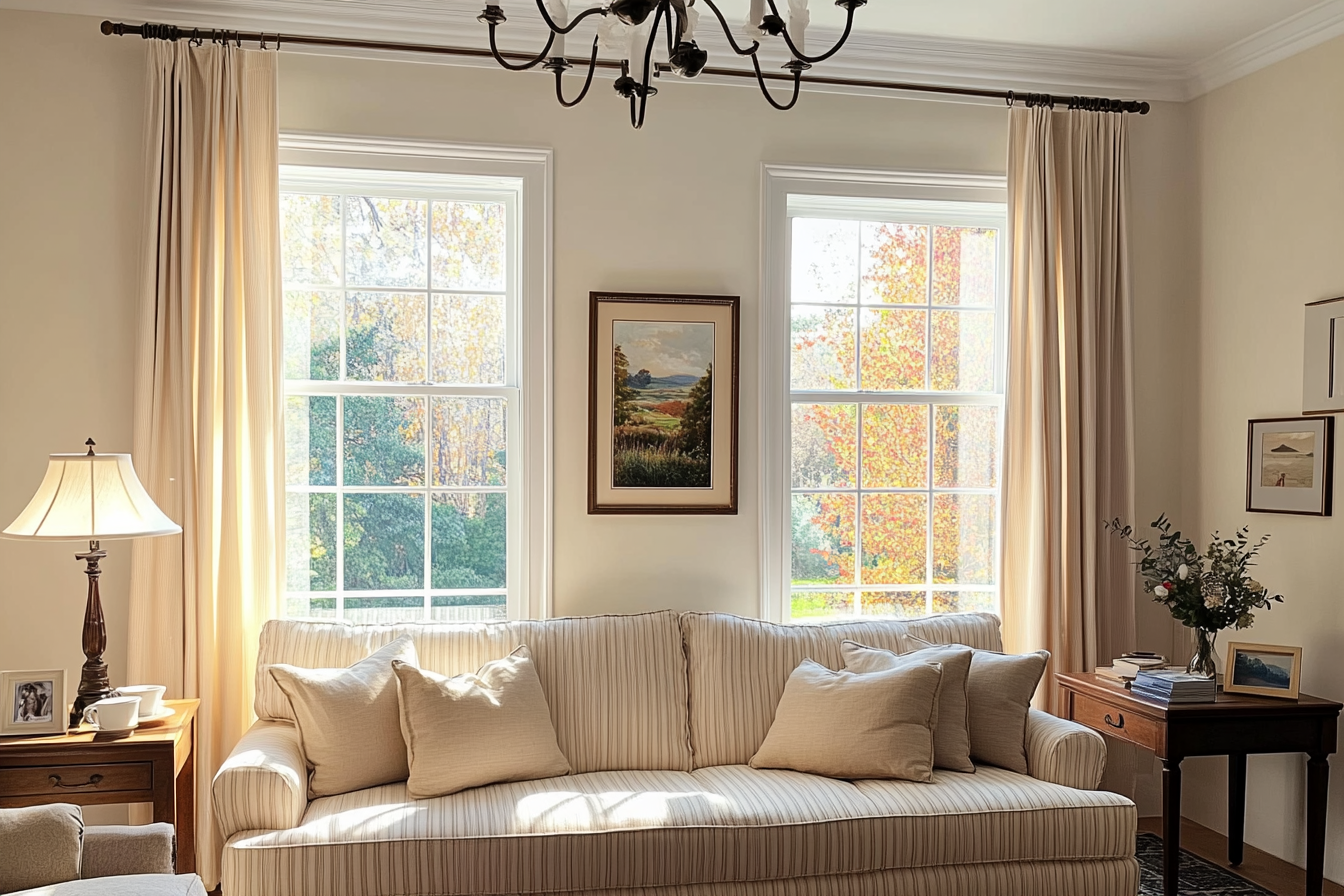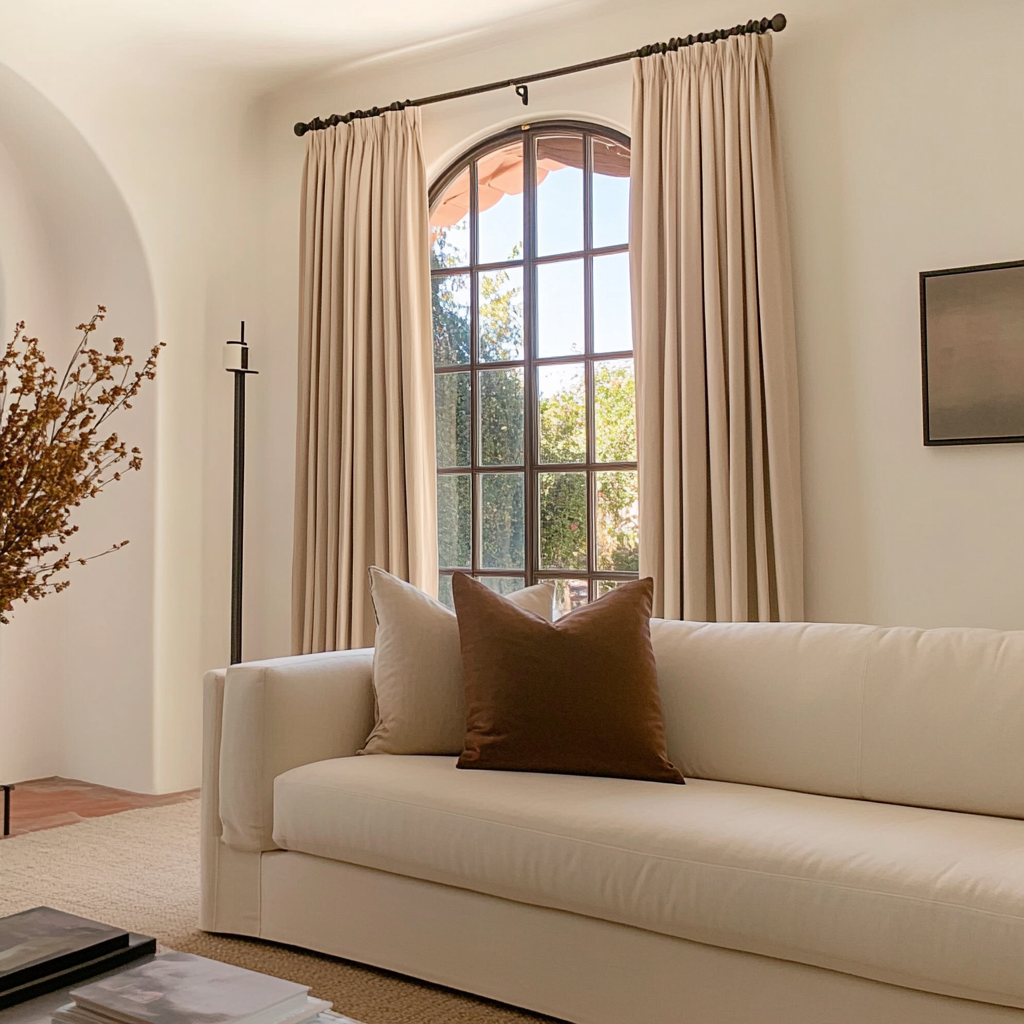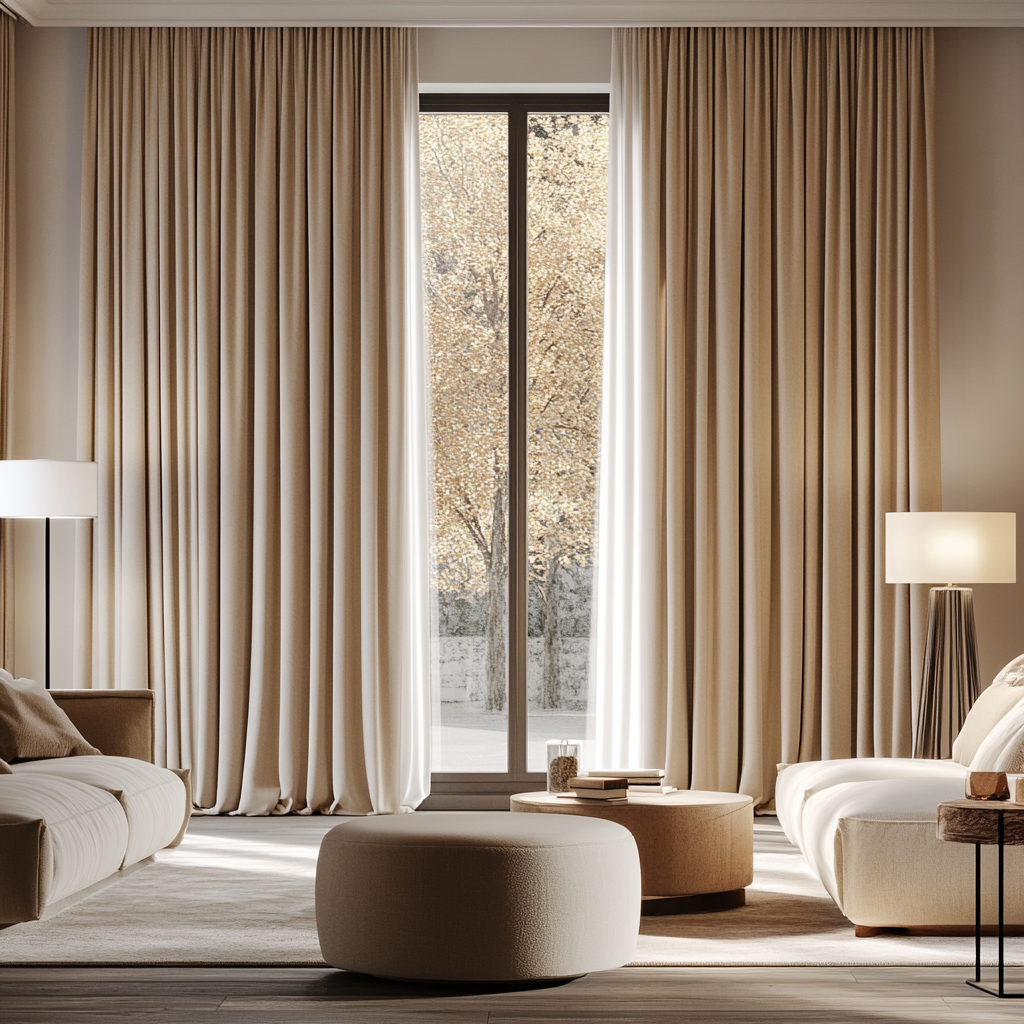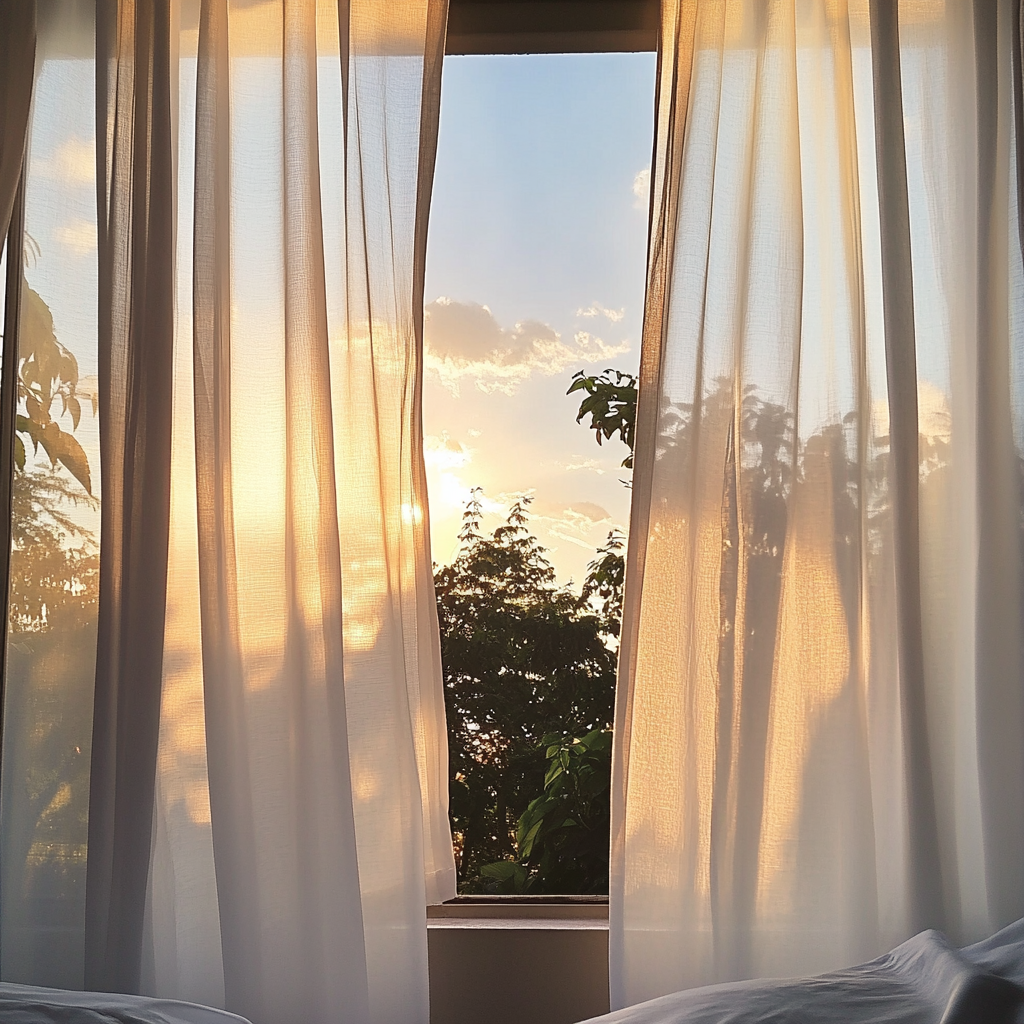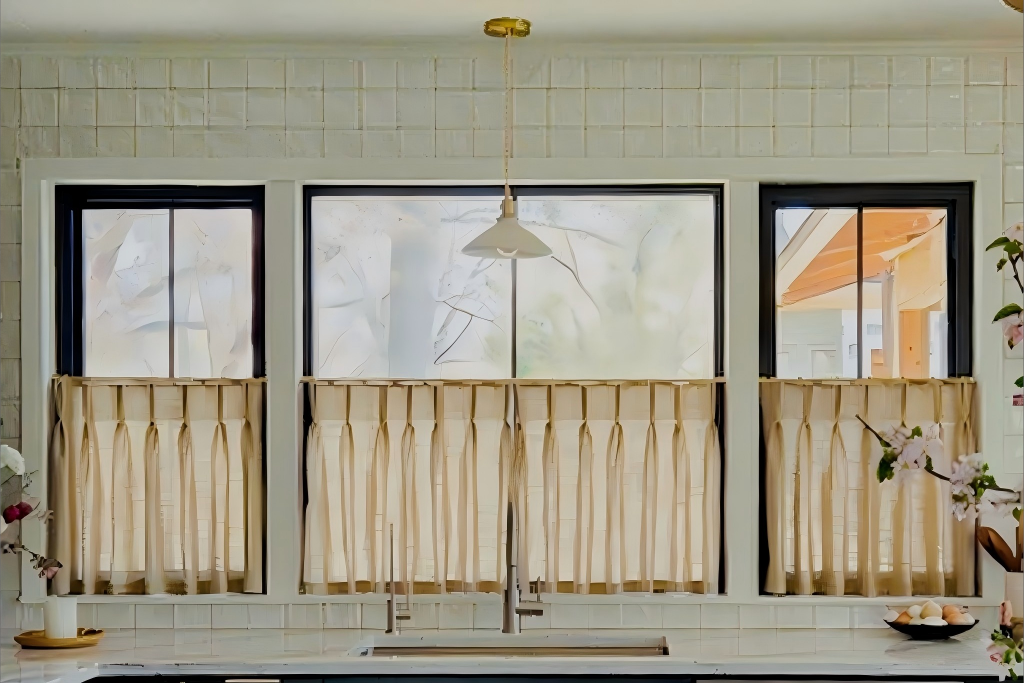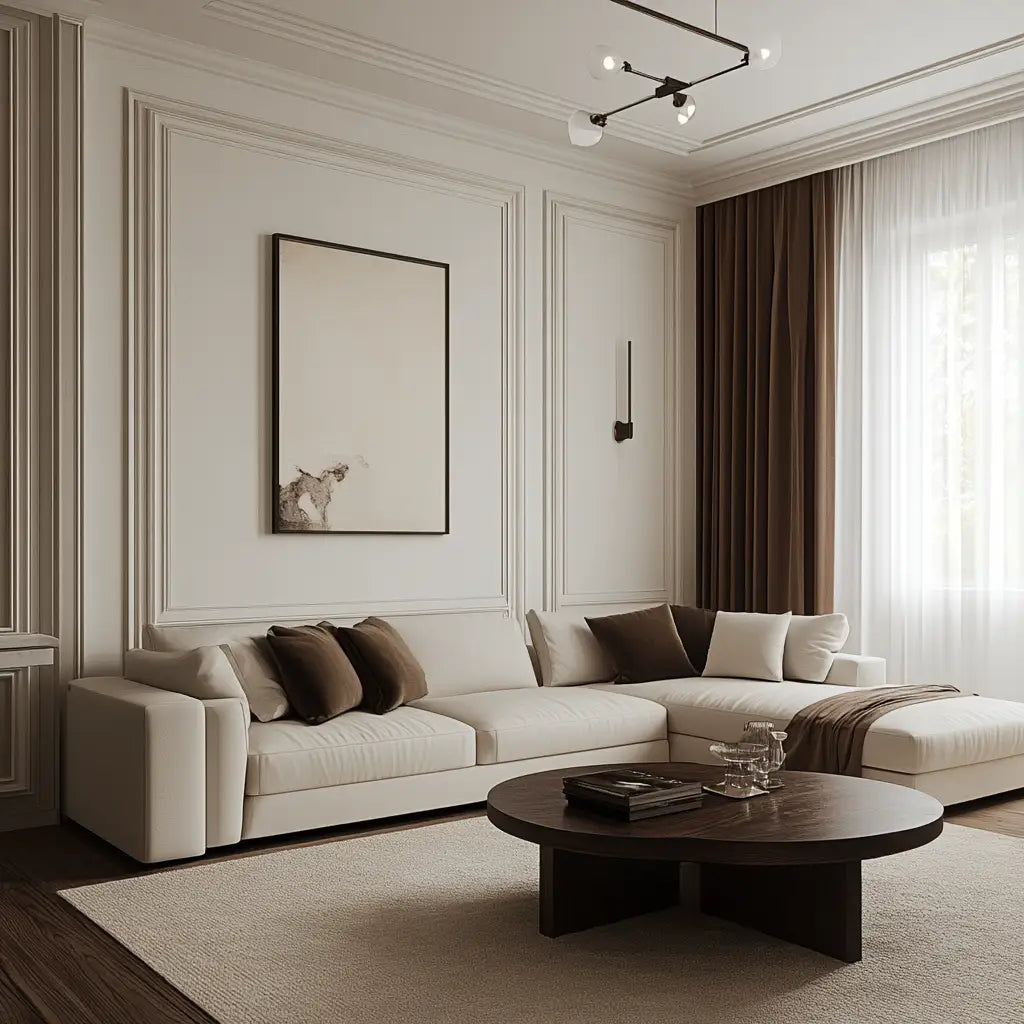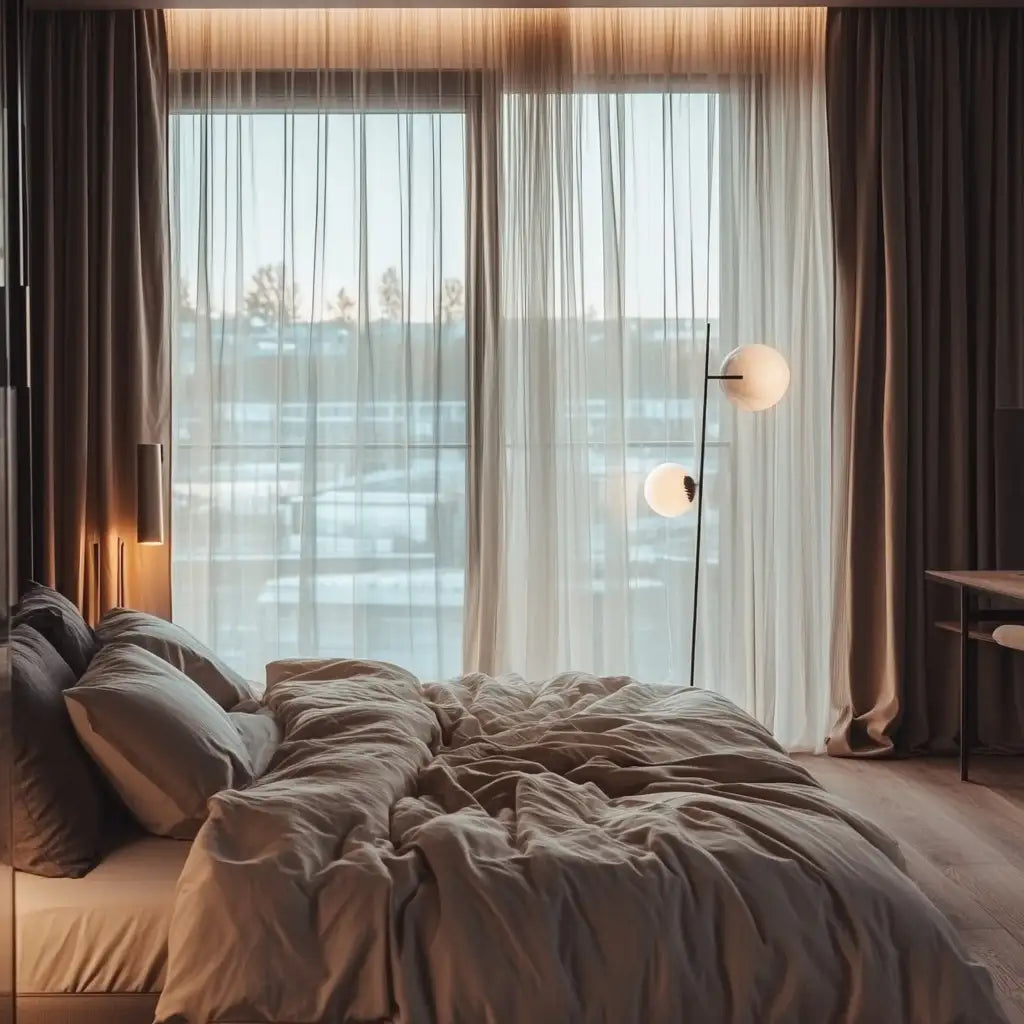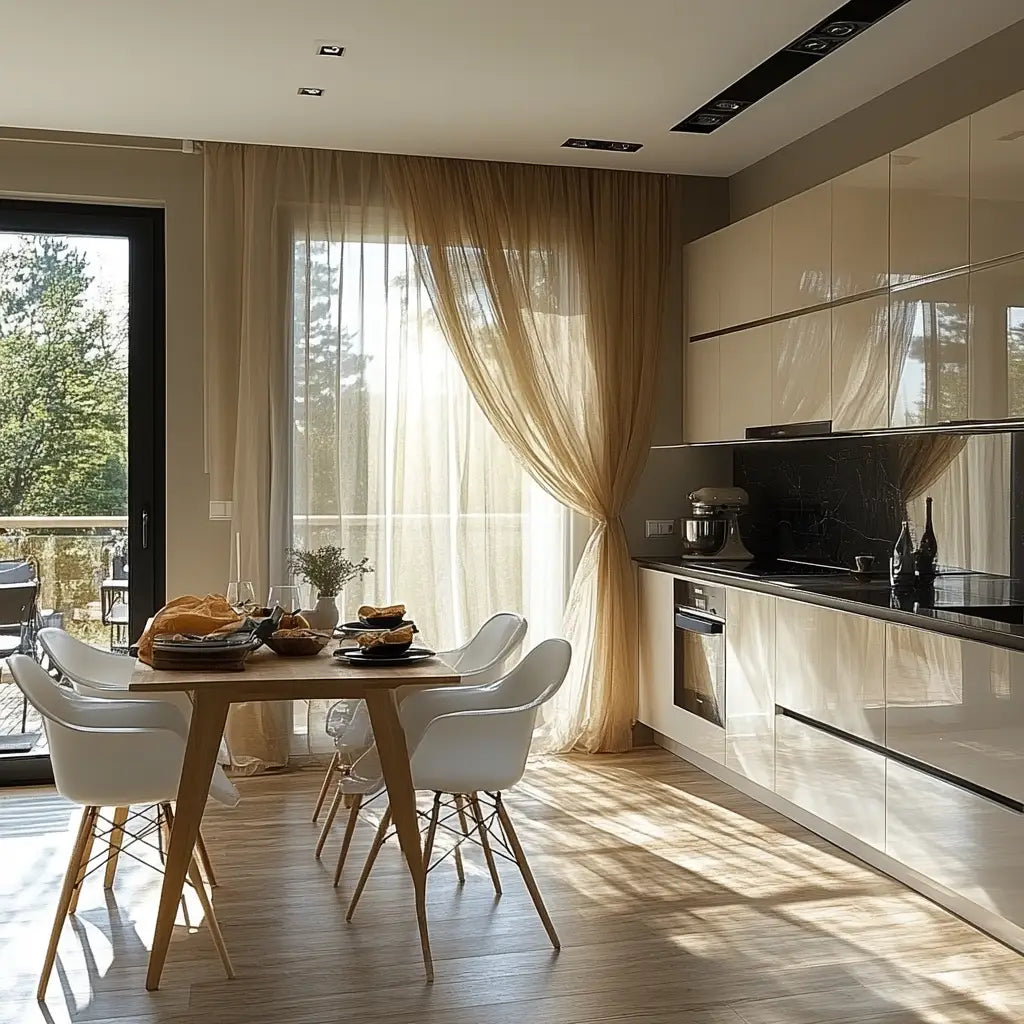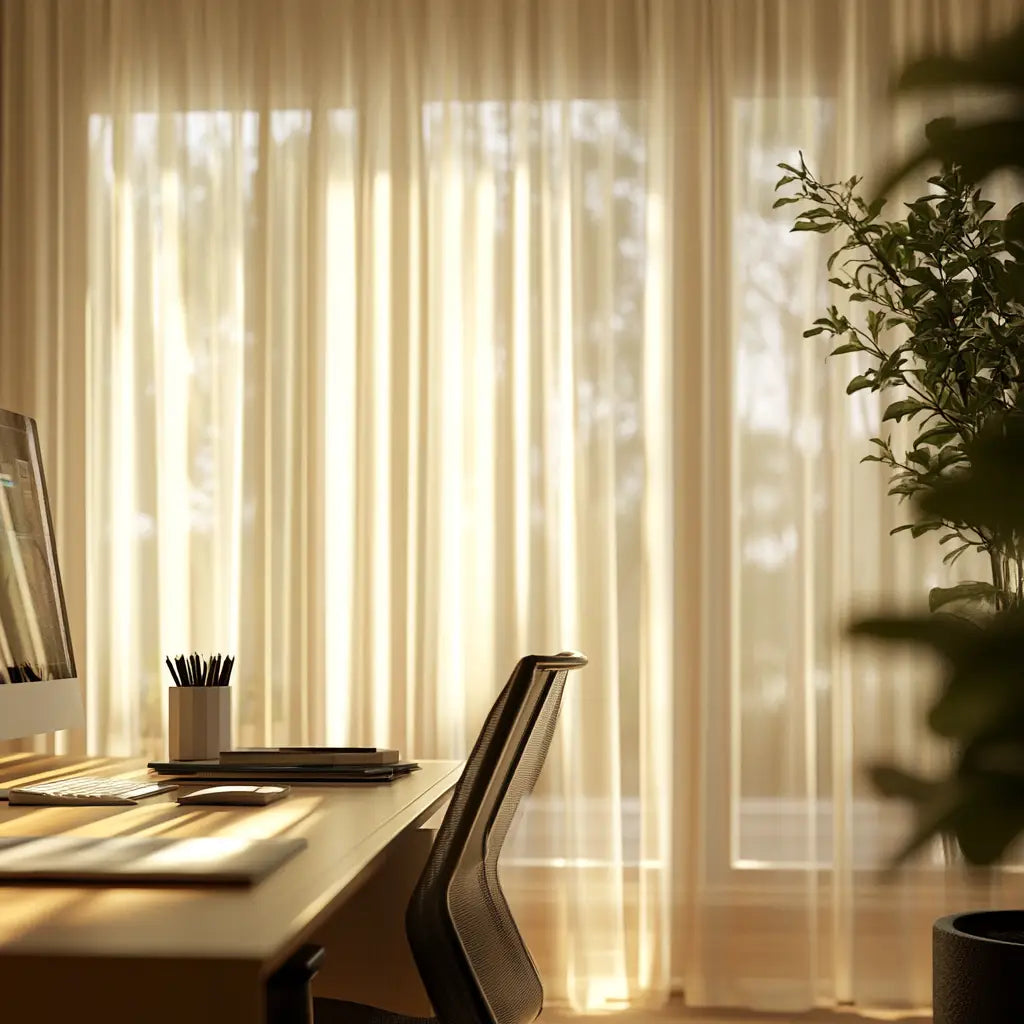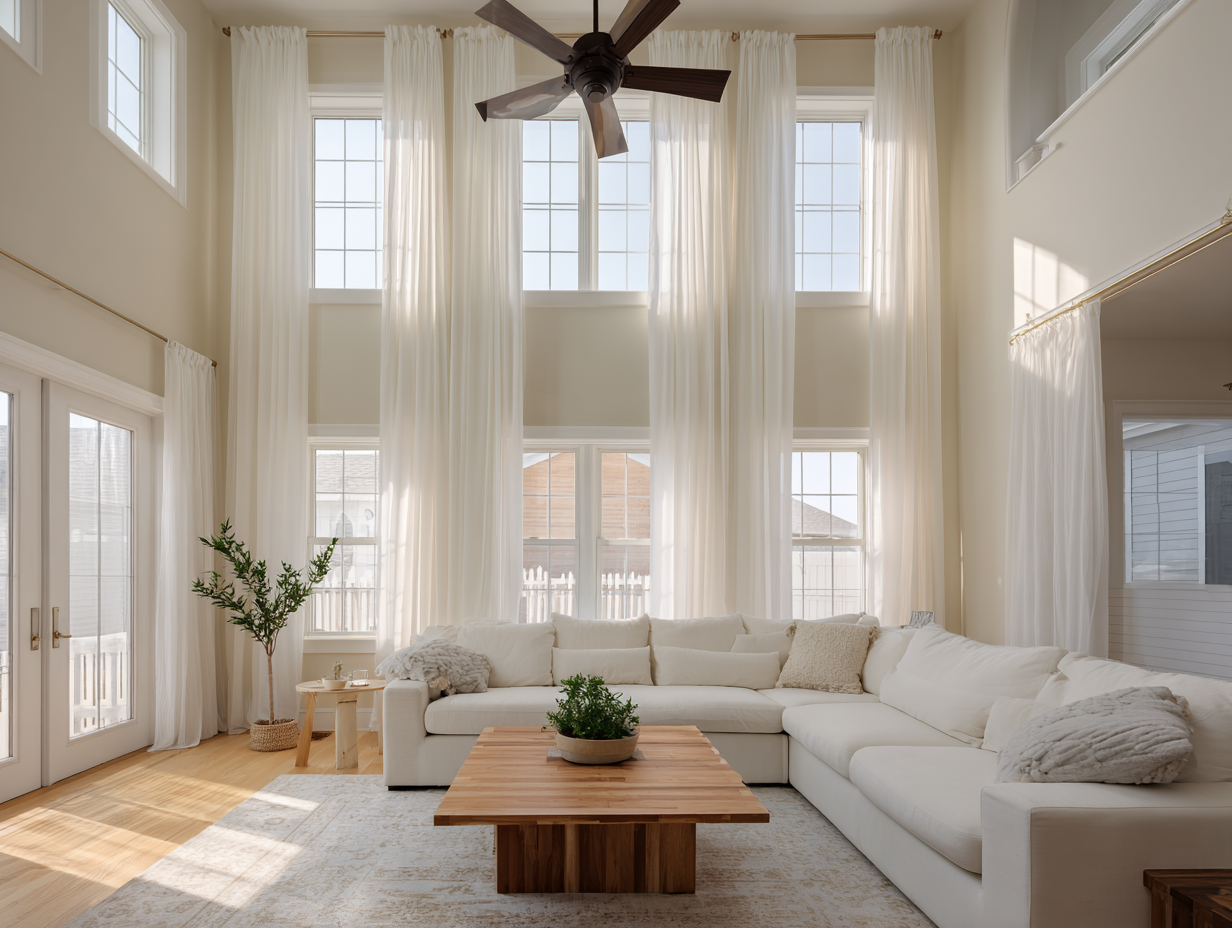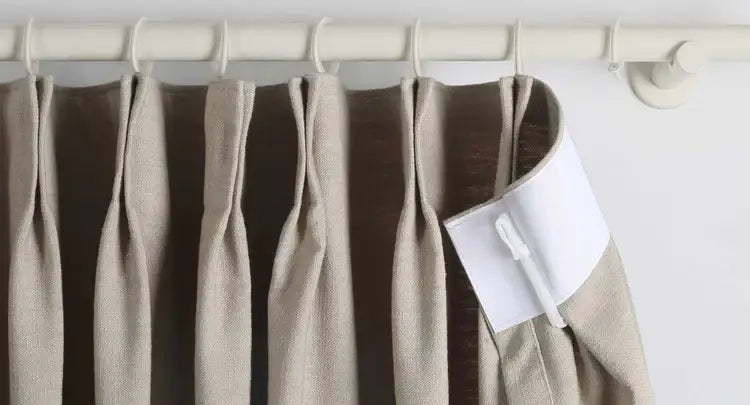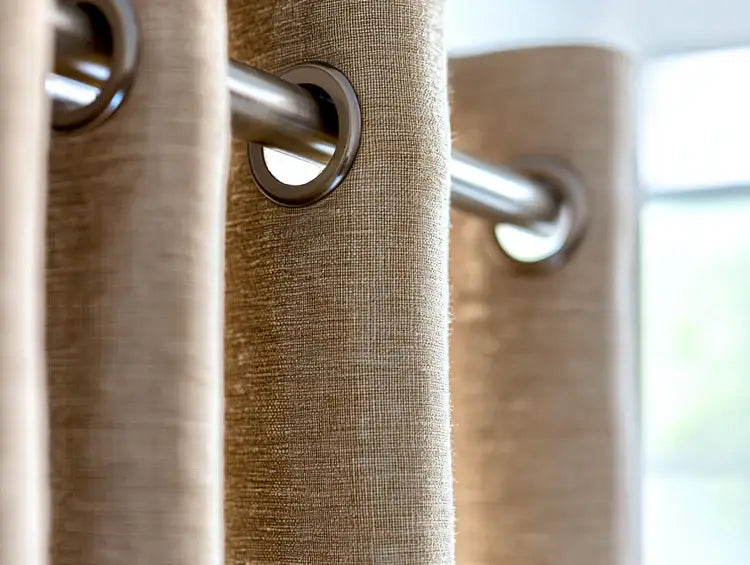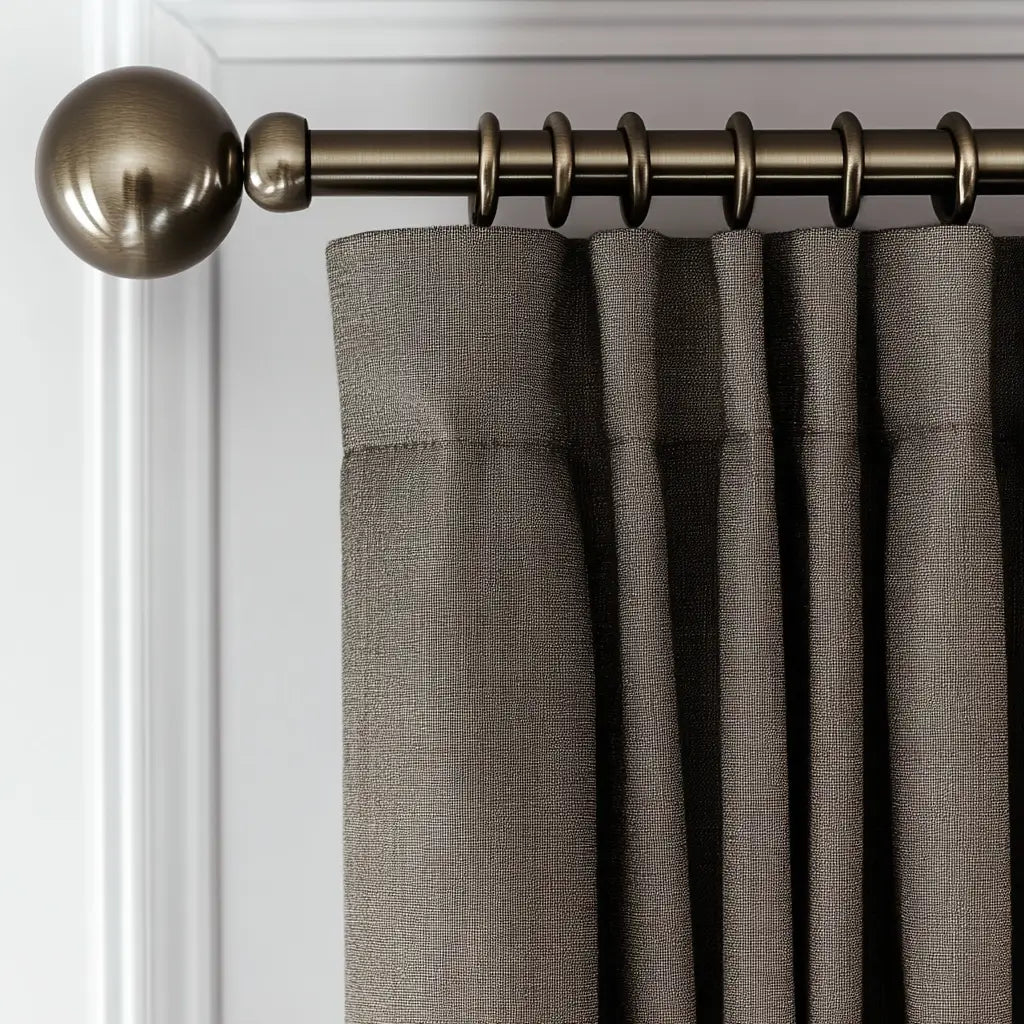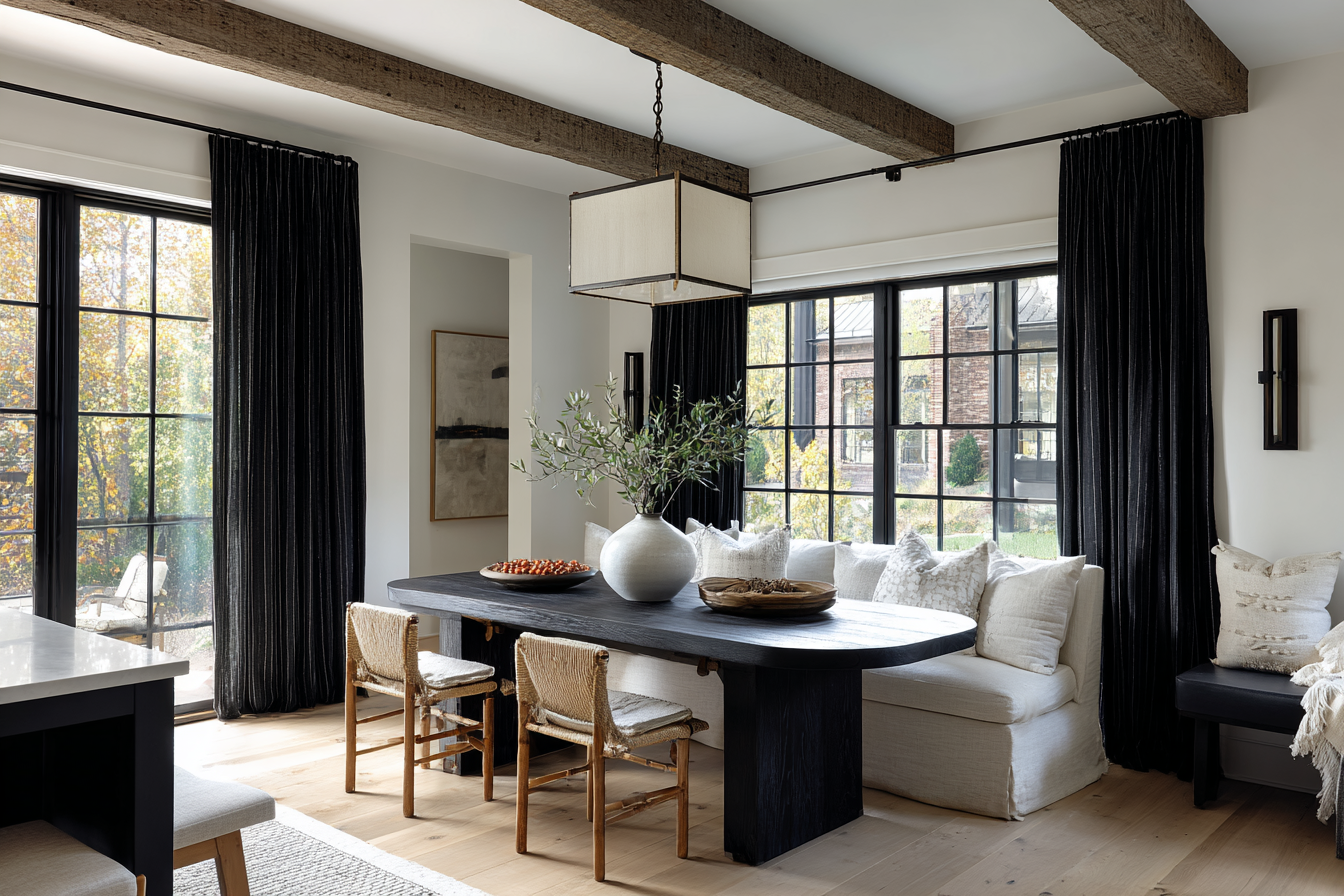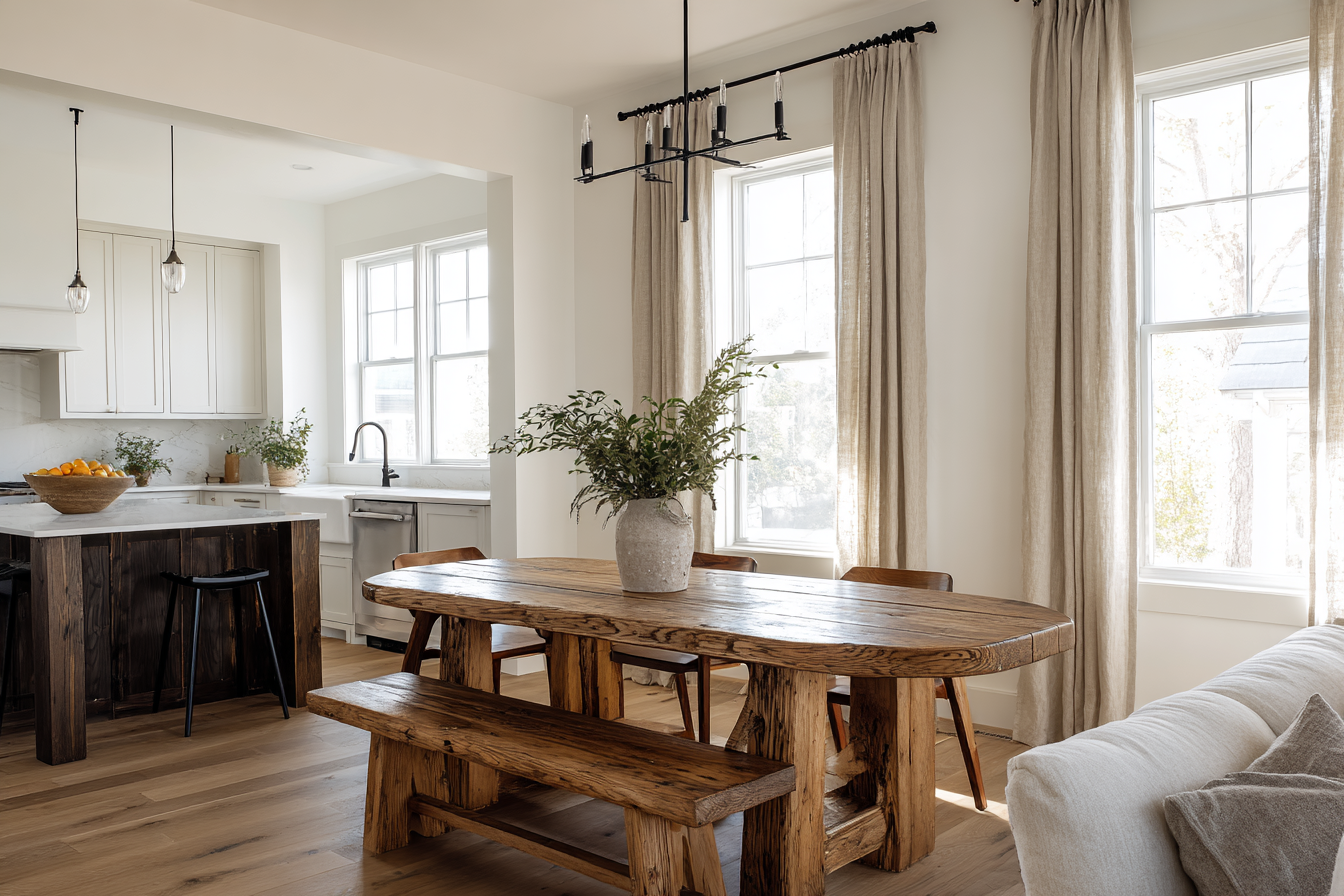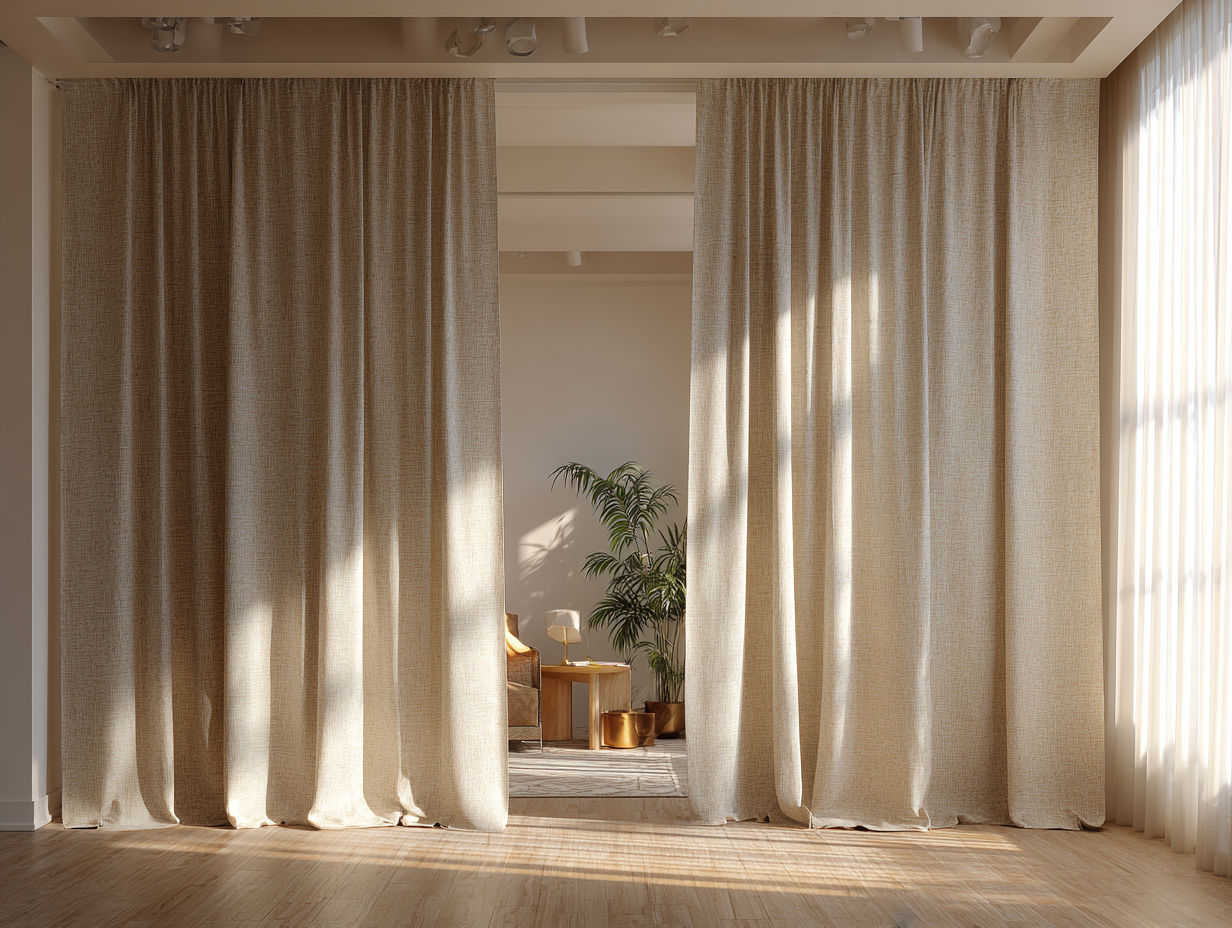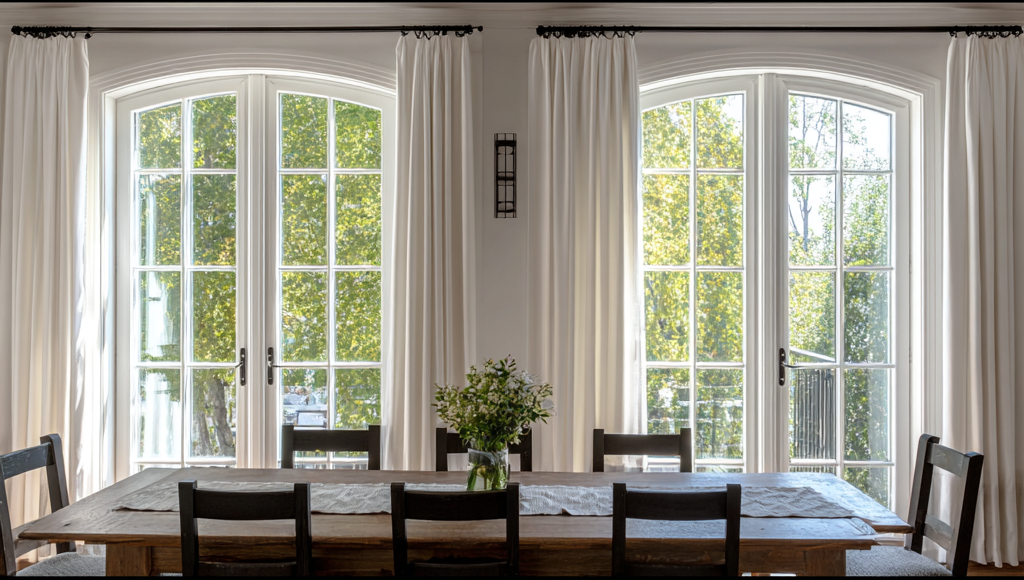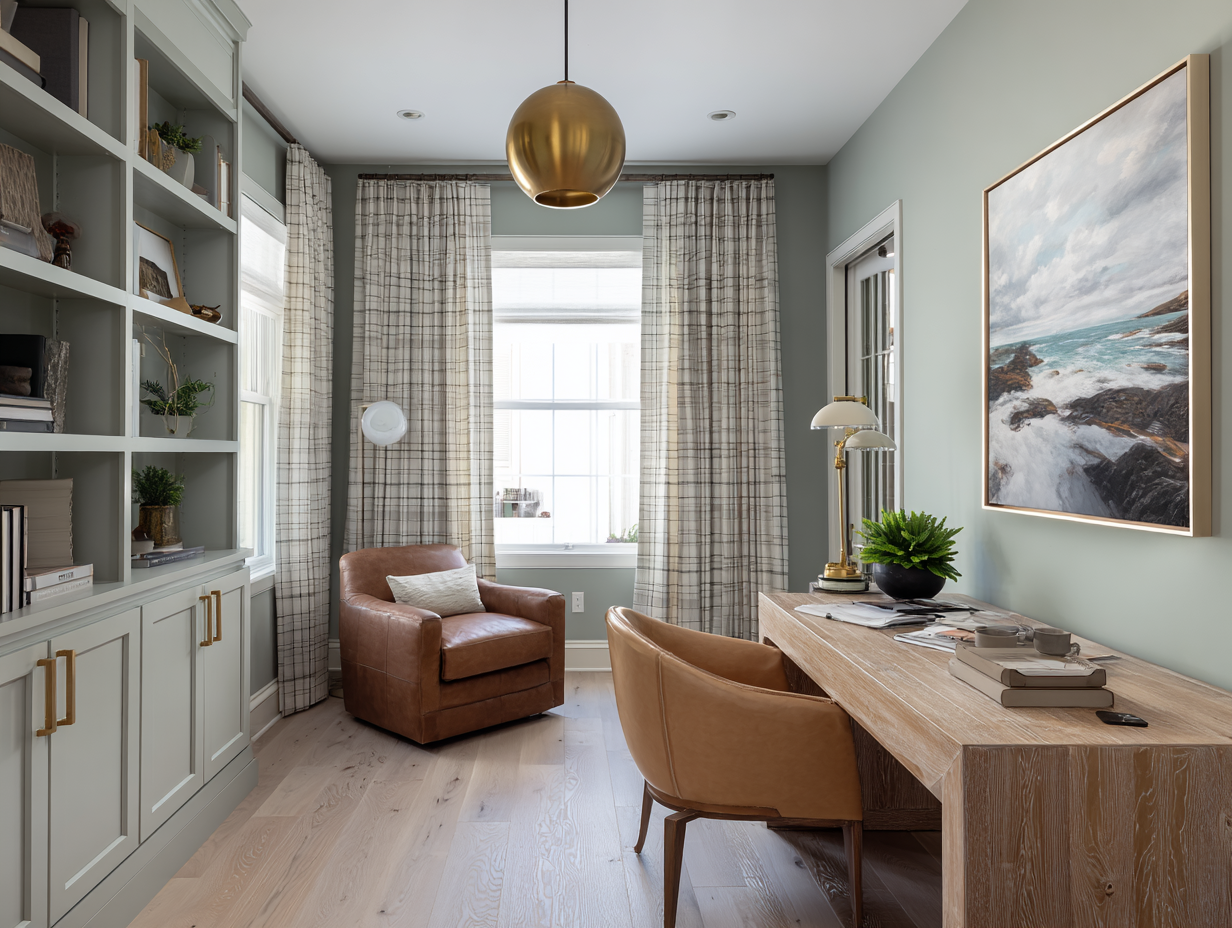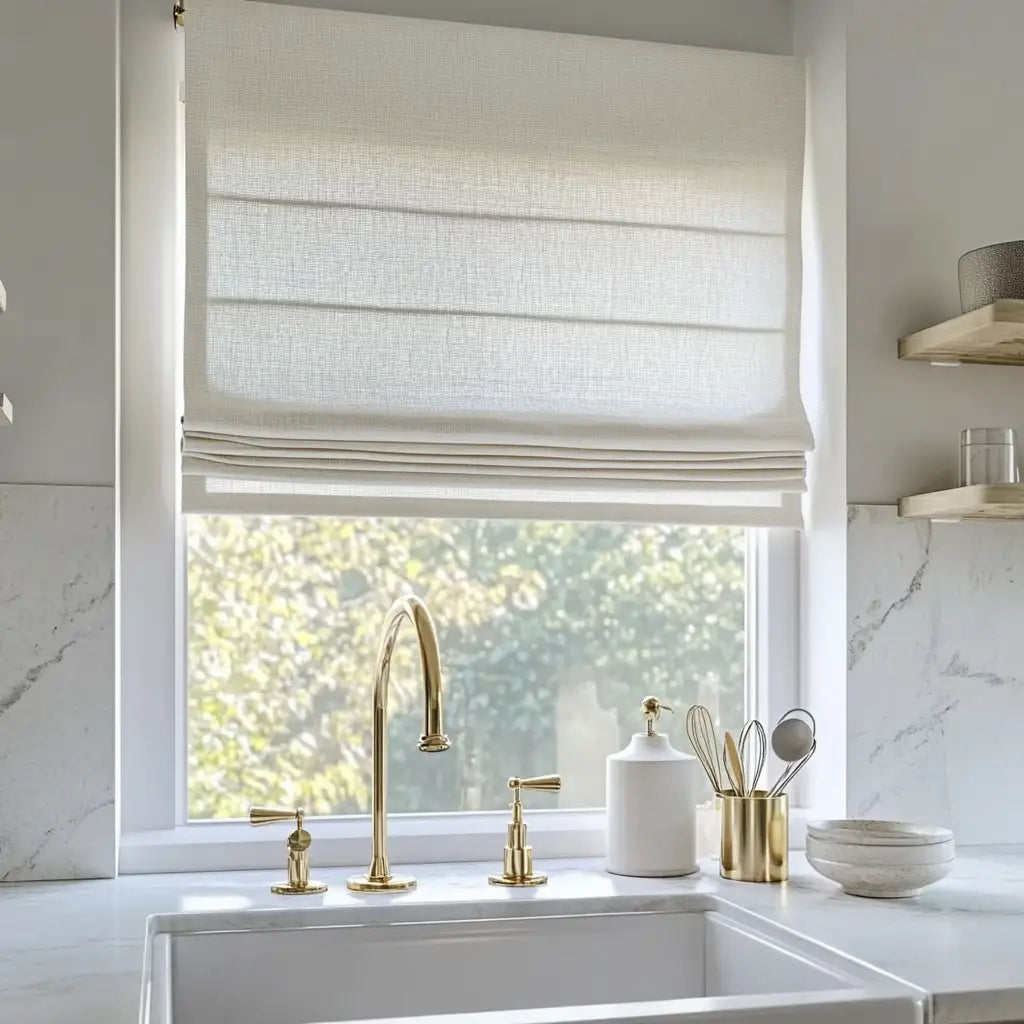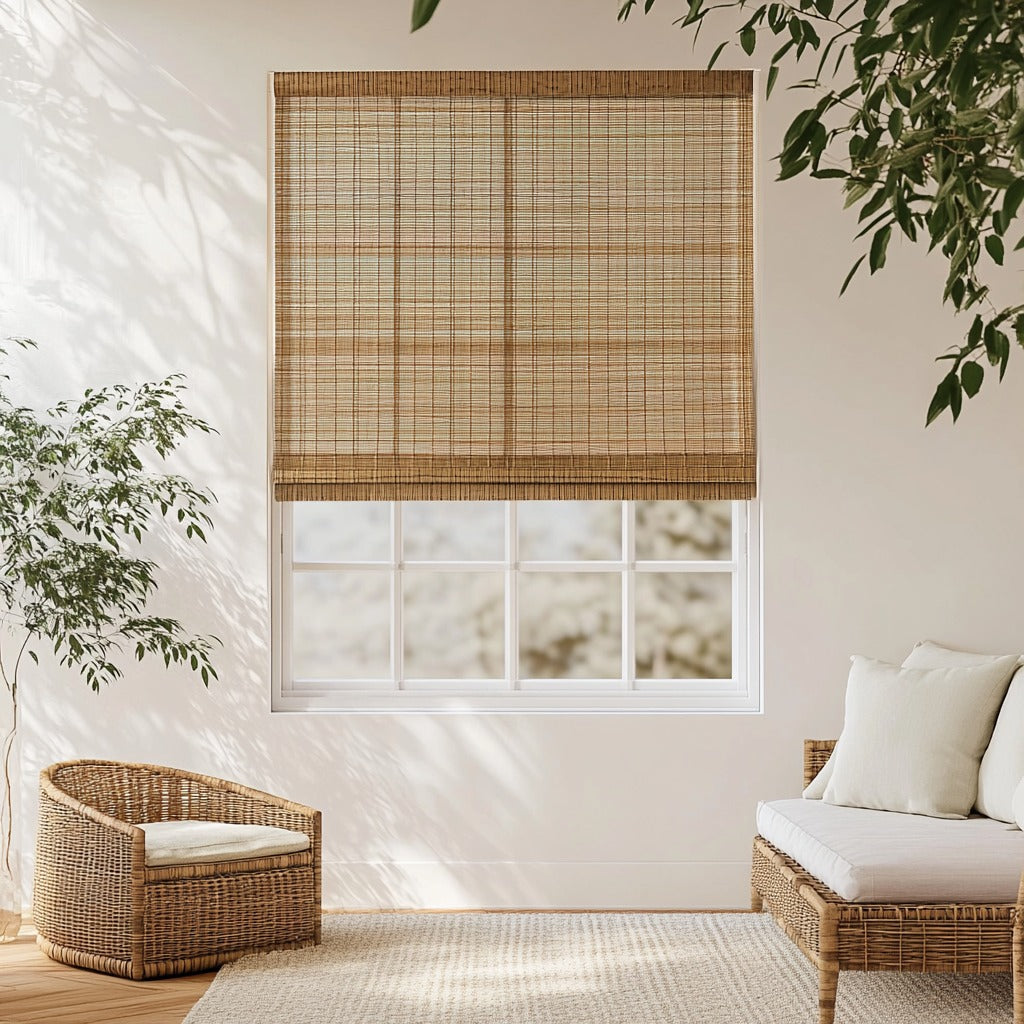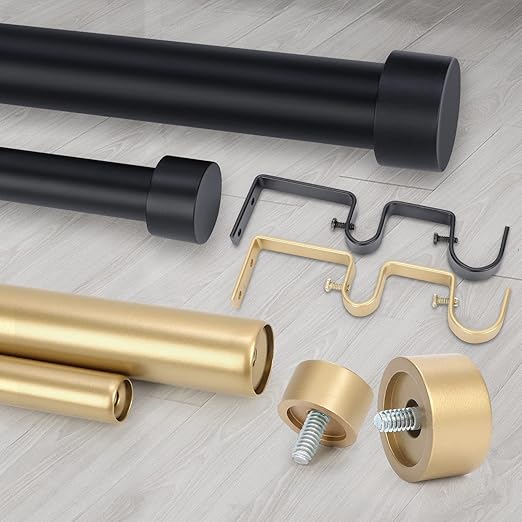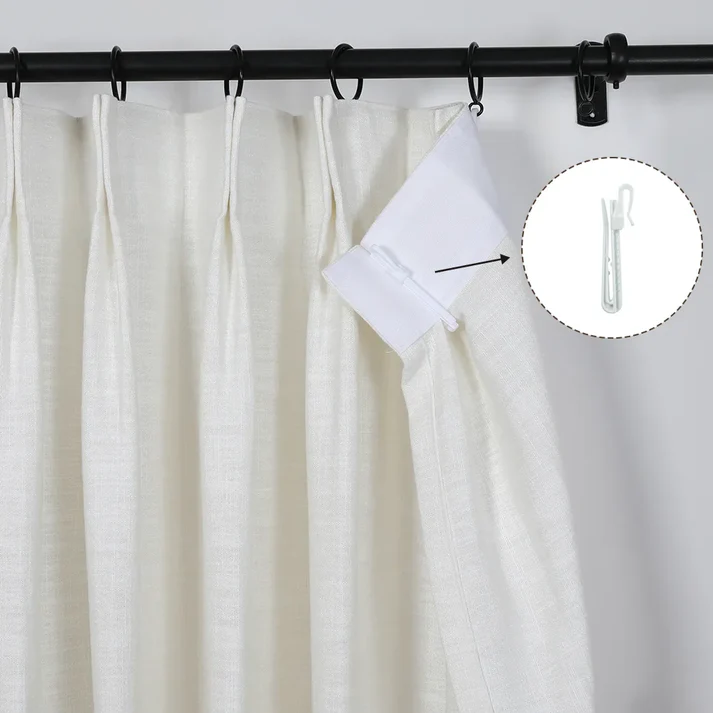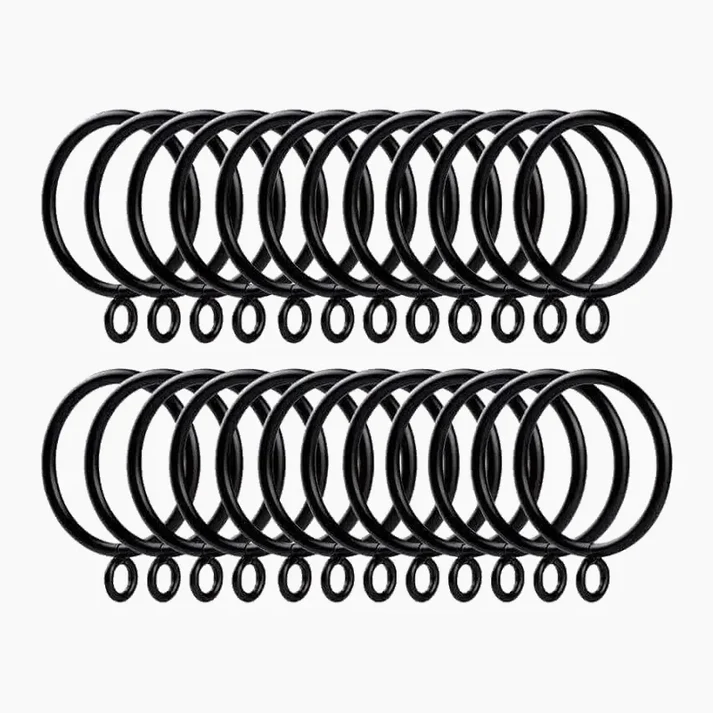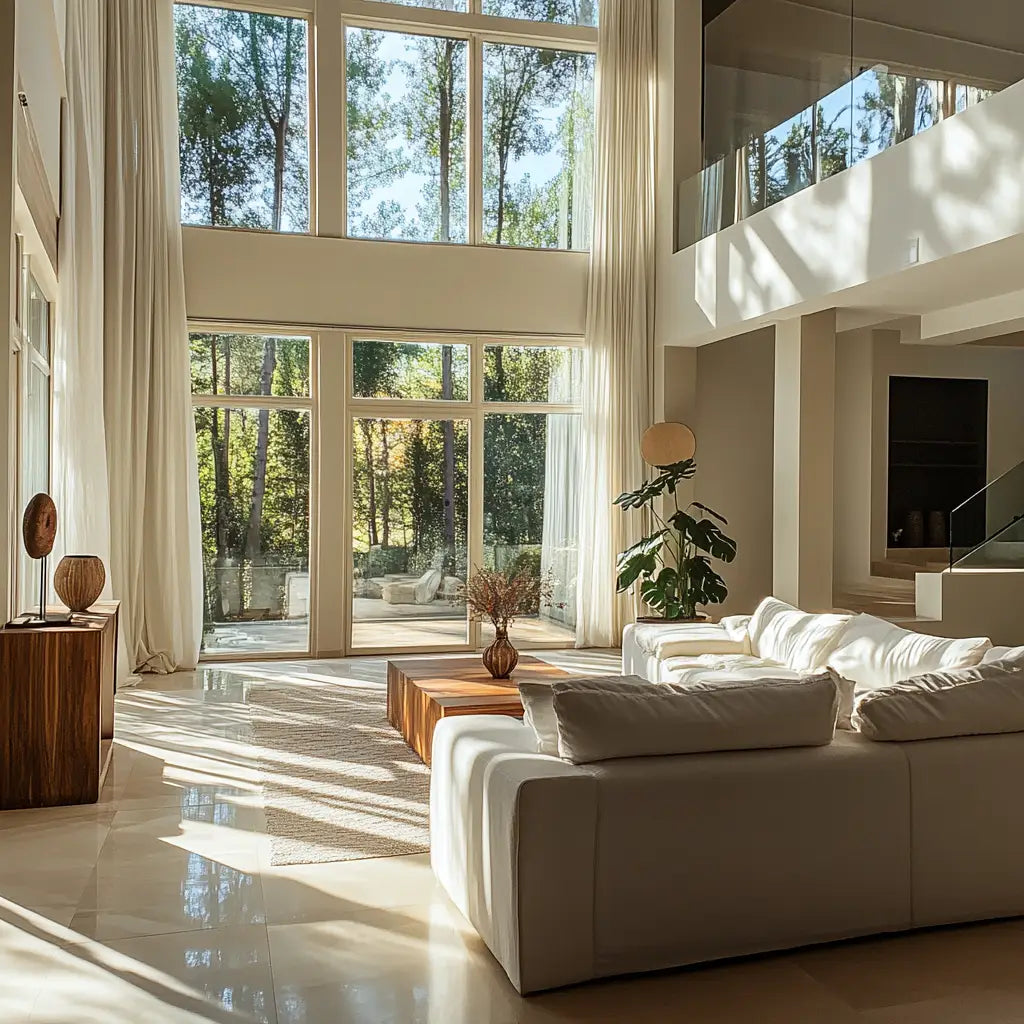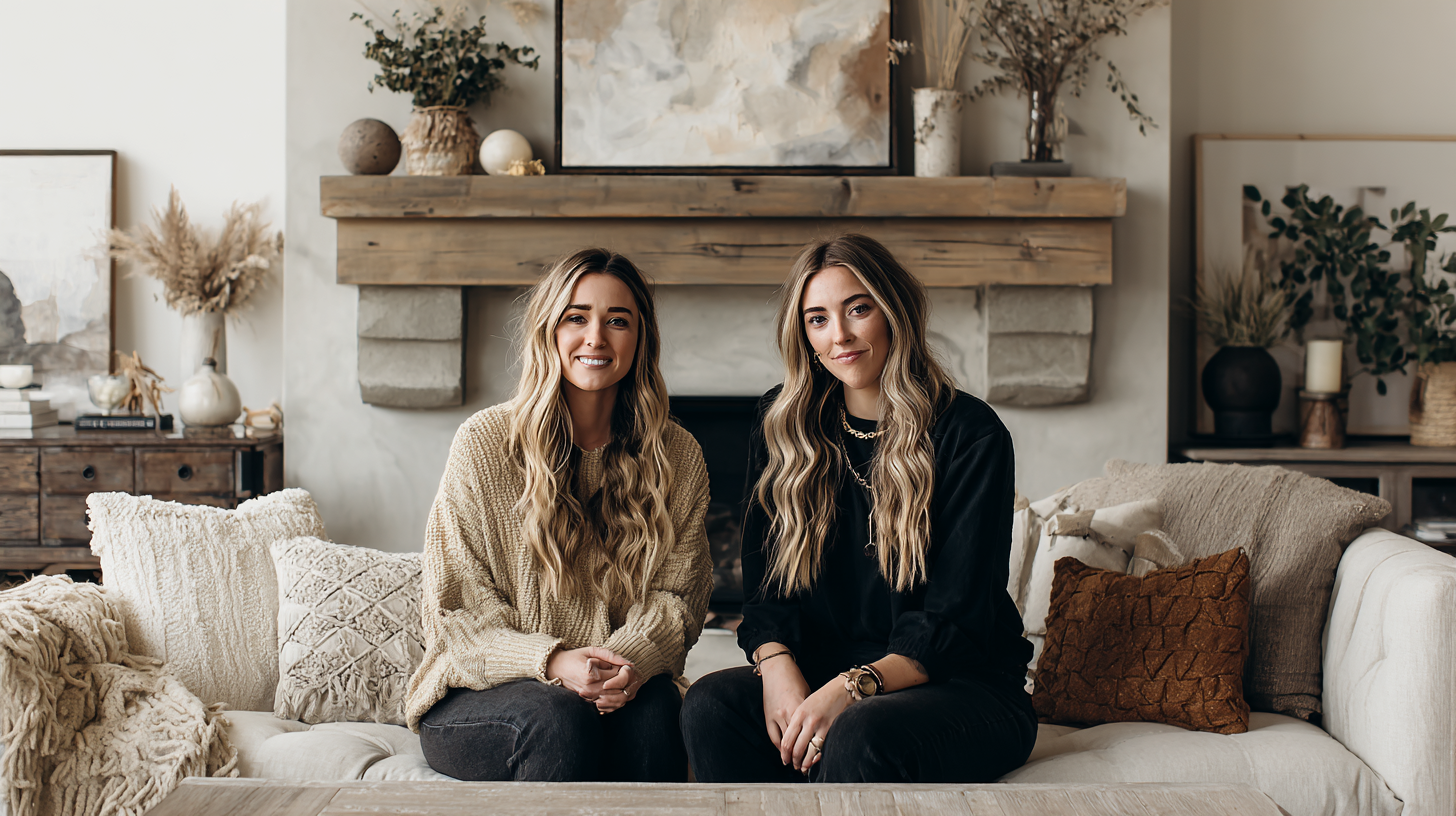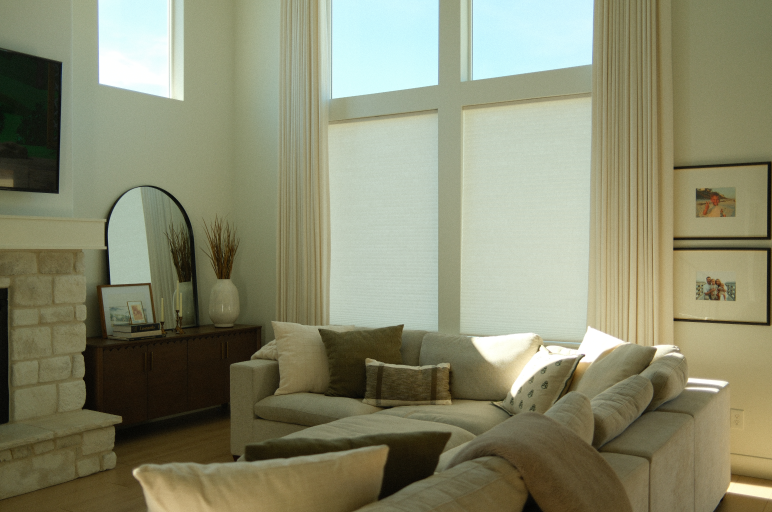
The Ultimate Guide to Curtain Heading Styles
Curtain headings—the top portion of a curtain where the fabric is gathered, pleated, or folded—play a key role in defining both the style and function of your window treatments. The right heading style affects how your curtains drape, stack back, and even the overall ambiance of a room.
With a wide variety of styles available, choosing the ideal curtain heading requires considering your decor, the curtain fabric, practical needs, and personal taste. In this guide, we’ll explore the most popular curtain heading styles, their benefits, and which spaces they suit best.
 Pictured: Florence Linen Blend Drapes Pleated. cr:@karina_illina
Pictured: Florence Linen Blend Drapes Pleated. cr:@karina_illina
Why Choosing the Right Curtain Heading Matters
Your choice of curtain heading can influence:
- Aesthetic appeal: A classic pinch pleat adds elegance, while a wave or ripple fold gives a modern, sleek look.
- Functionality: The heading affects how curtains slide, stack back, and block light.
- Fabric use: Some styles require more fabric than others, which impacts cost and fullness.
By understanding the characteristics of each heading style, you can select one that complements both your interior design and practical needs.
Common Curtain Heading Styles
1. Pinch Pleat
Pinch pleats are classic and elegant, formed by stitching fabric into evenly spaced pleats at the top. Variations include single, double, and triple pinch pleats, each offering different fullness and stack back.
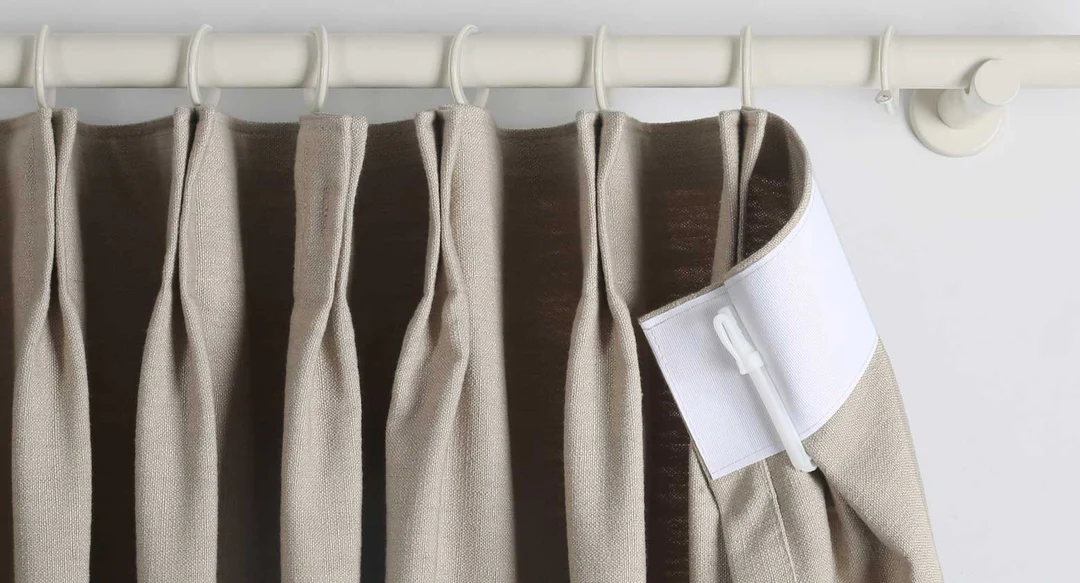
Pros:
- Structured, tailored appearance
- Compact stack back, maximizing light and view when open
- Suitable for a wide range of fabrics
Cons:
- Requires more fabric and labor
- More formal, may not suit casual spaces
Best for: Living rooms, dining rooms, and any space aiming for a refined, traditional look.
2. 4-in-1 Curtain Heading Style
The 4-in-1 heading combines four ways to hang your curtains: hook belt, rod pocket, back tab, and clip rings. This versatile style allows you to adapt your curtains to different rods, poles, or track systems, offering multiple looks from a single curtain panel.
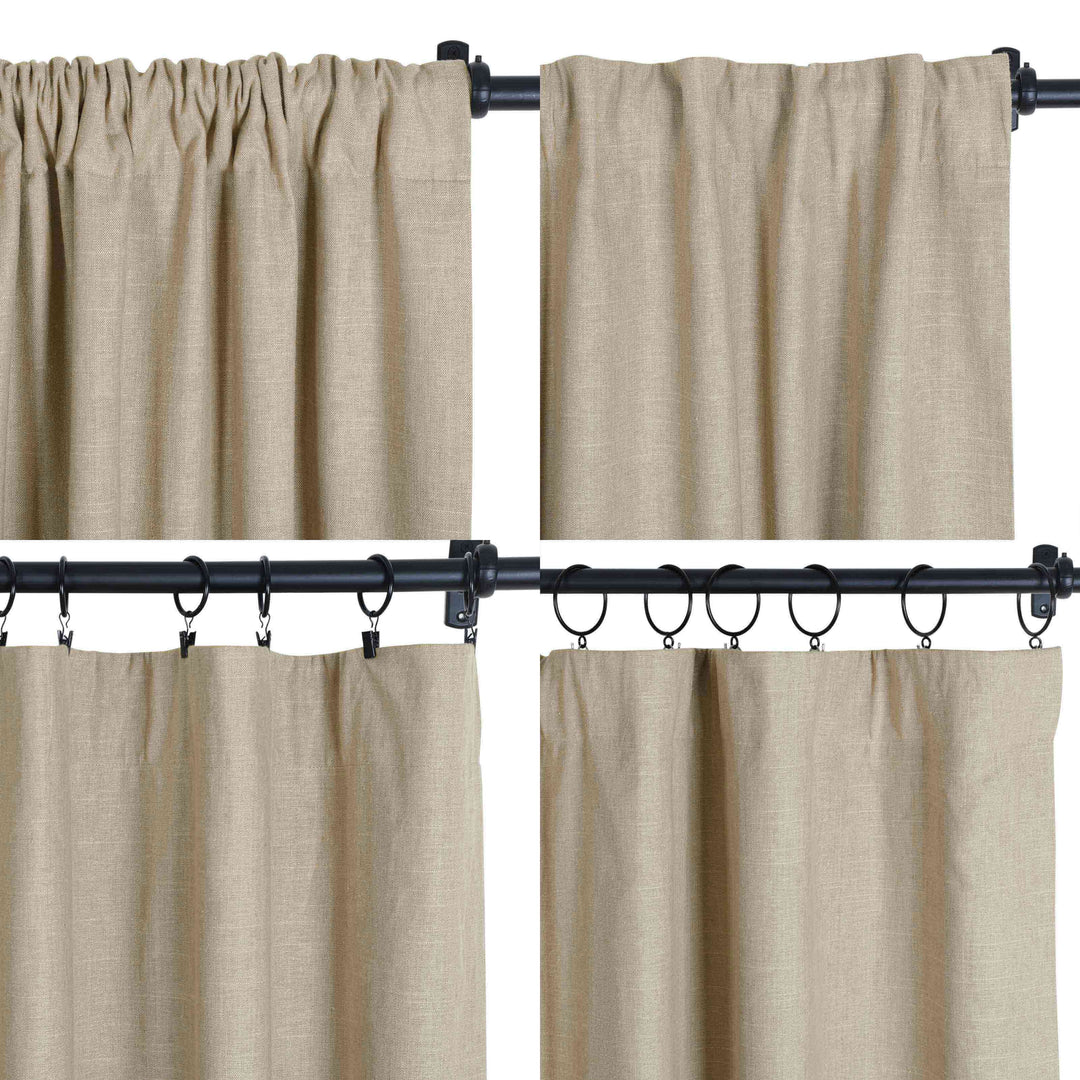
Pros:
- Versatile and customizable: One curtain can be hung in multiple ways, giving you flexibility for different rooms or moods.
- Tailored appearance: Proper fold calculations create depth and texture, adding sophistication to any window treatment.
Cons:
- Complex installation: Switching between different hanging methods may require more effort than a single straightforward style.
- Time-consuming: Some preparation and adjustment may be needed to achieve the desired look.
Best for: Spaces where flexibility is important, or for those who want to experiment with multiple curtain looks without buying separate panels.
3. Grommet / Eyelet
Grommet headings feature evenly spaced metal rings, allowing curtains to glide smoothly along a rod. They offer a sleek, minimalistic look.
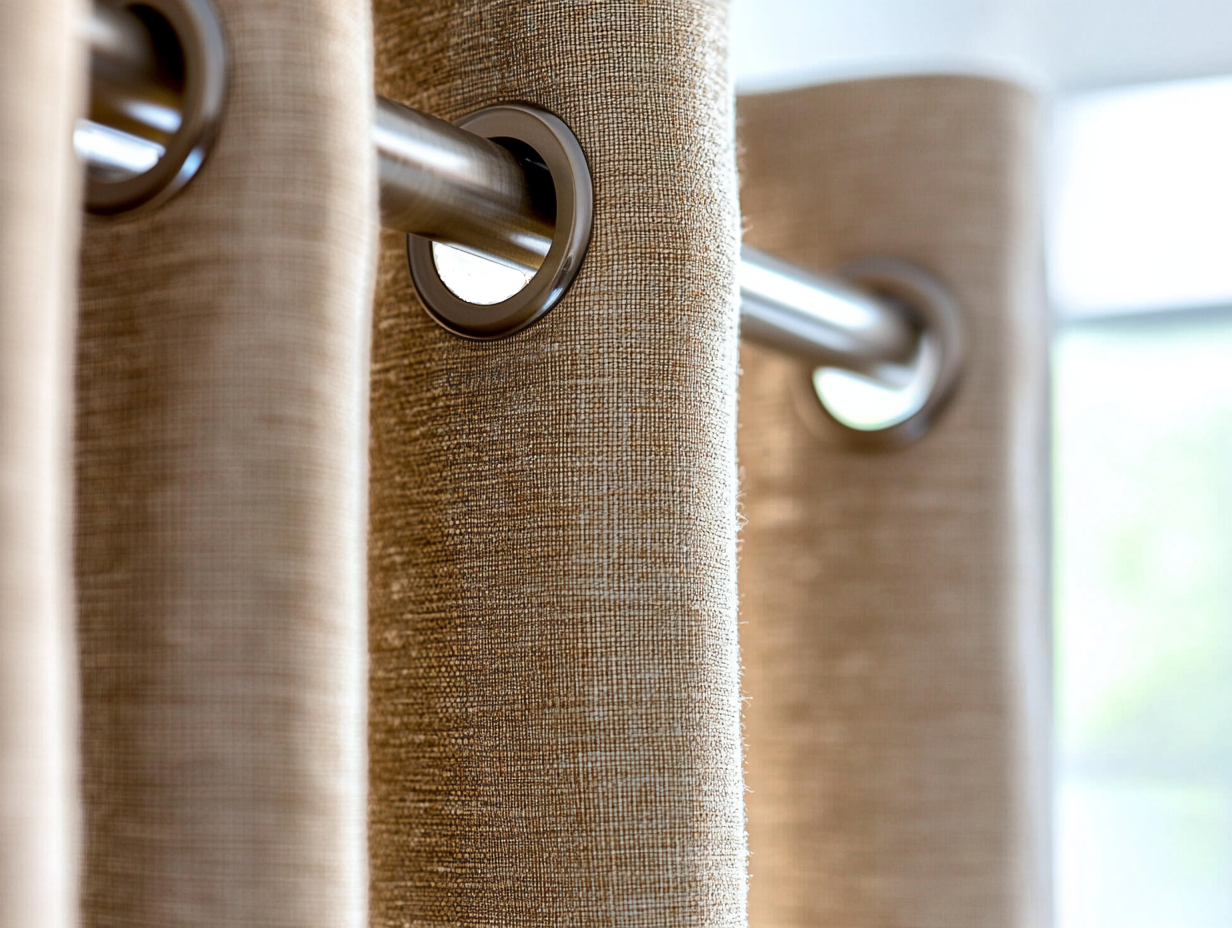
Pros:
- Easy to install
- Modern appearance
- Works well with patterned and plain fabrics
Cons:
- Less suitable for blackout needs
- Heavy fabrics may strain eyelets over time
Best for: Casual, modern spaces where simplicity and smooth operation are priorities.
4. Rod Pocket
Rod pocket curtains have a sewn-in pocket at the top through which the rod is threaded. This classic style offers a soft, gathered look.
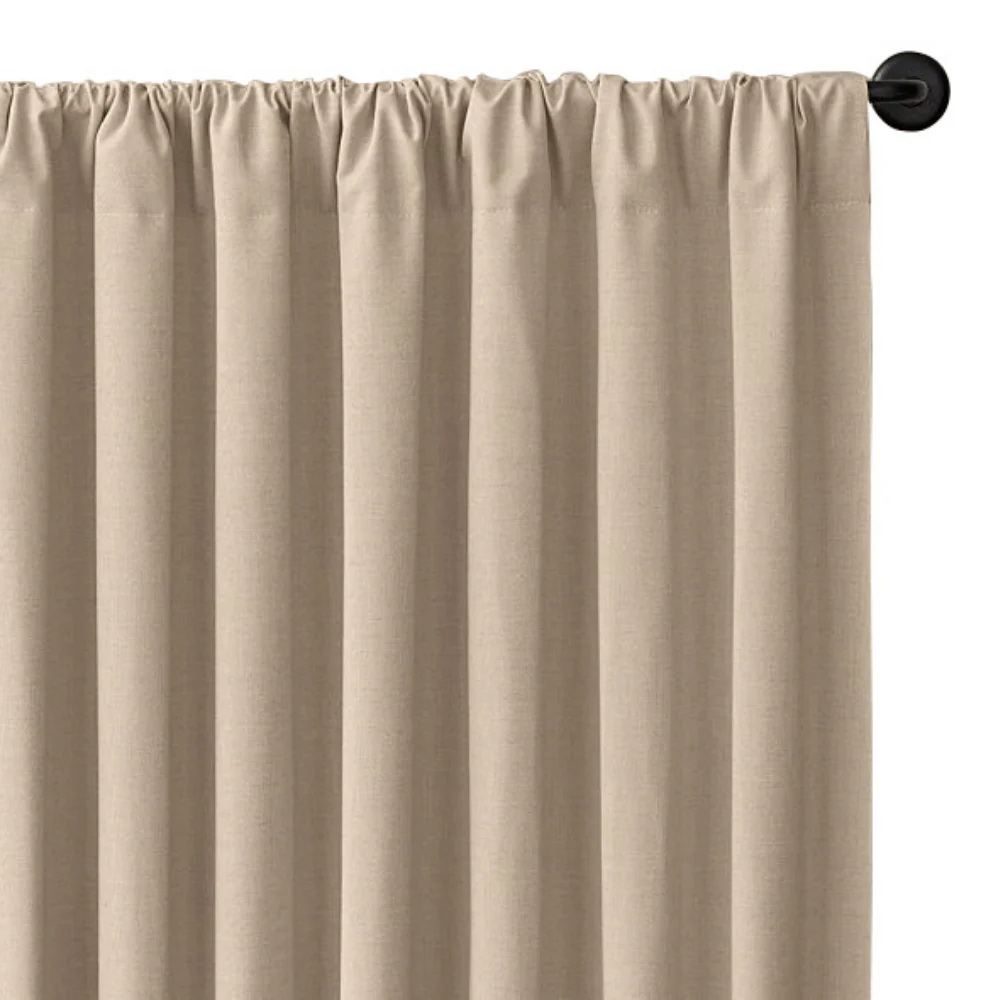
Pros:
- Simple and budget-friendly
- Easy to install
- Works with lightweight fabrics
Cons:
- Limited adjustability
- Stack back can be bulky
- Not ideal for frequent opening and closing
Best for: Bedrooms, casual living areas, and spaces where a traditional or understated look is desired.
5. Tab Top
Tab top curtains feature fabric loops at the top that slide over a rod. They are casual, simple, and modern.
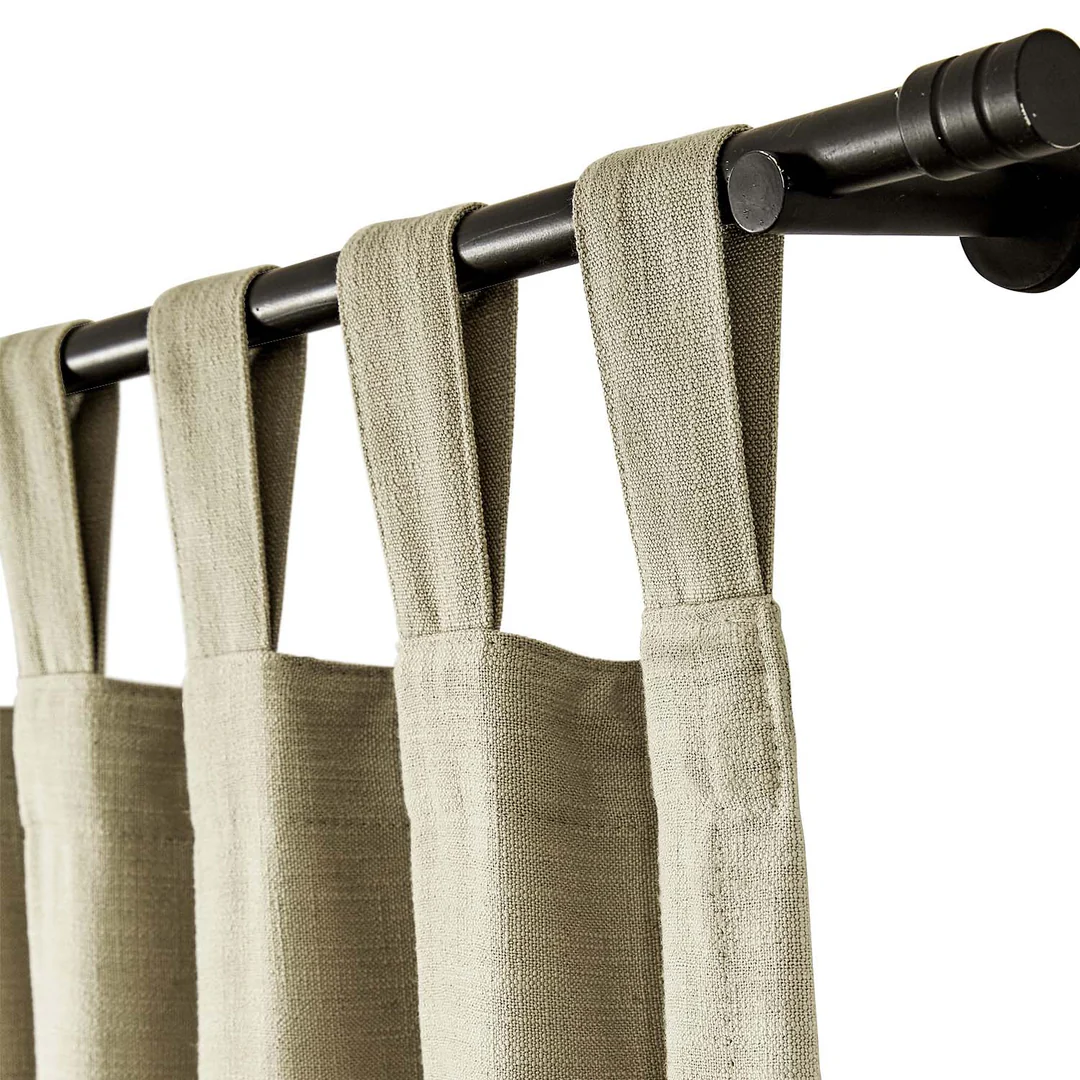
Pros:
- Effortless installation
- Contemporary, relaxed style
Cons:
- Light gaps between tabs
- May require occasional adjustments
- Not ideal for heavy fabrics
Best for: Kitchens, casual living spaces, and rooms where a laid-back style is preferred.
6. Inverted Box Pleat
Inverted box pleats fold inward, creating a clean, tailored appearance. They provide a structured, symmetrical look ideal for formal spaces.
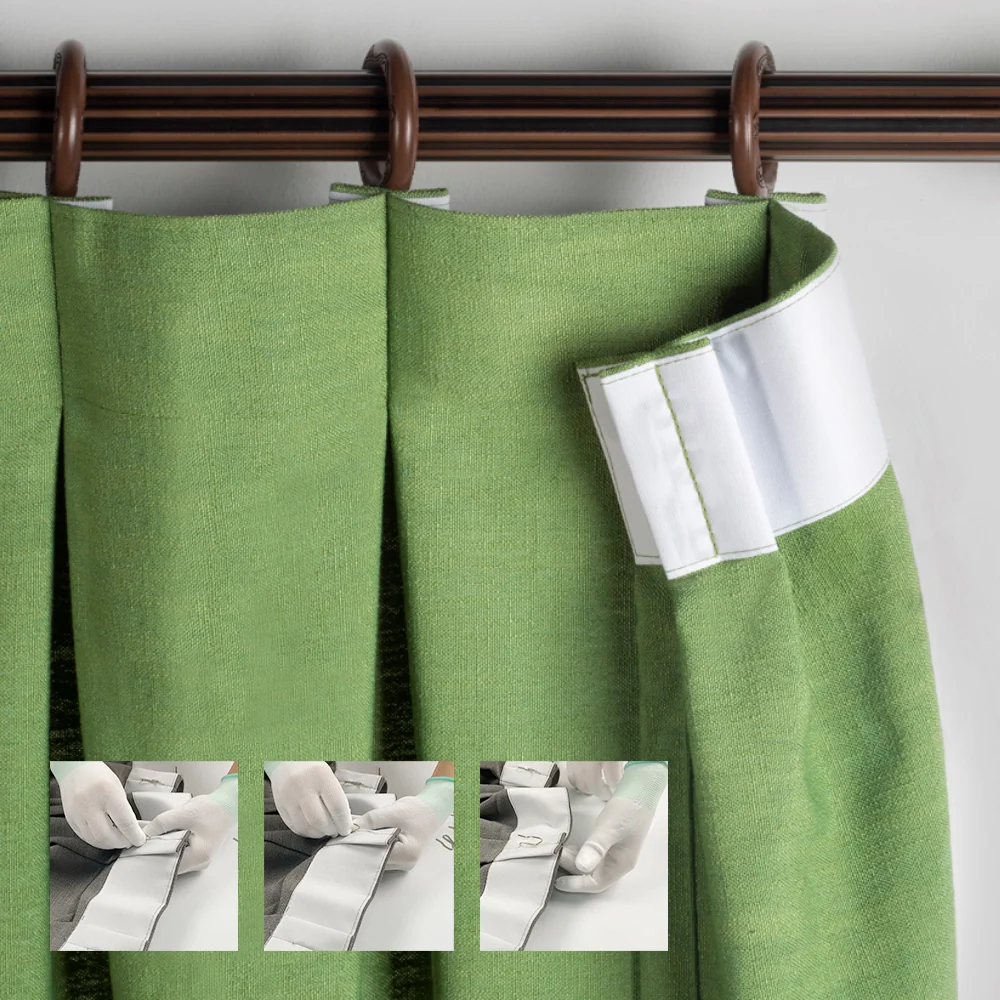
Pros:
- Polished, balanced look
- Works with a variety of fabrics
Cons:
- Higher fabric and labor requirements
- Less practical for sheer fabrics
Best for: Formal living rooms, dining rooms, or spaces requiring a symmetrical, tailored aesthetic.
7. Ripple Fold
Ripple fold headings maintain uniform folds as curtains slide along a track, offering a sleek, modern appearance.
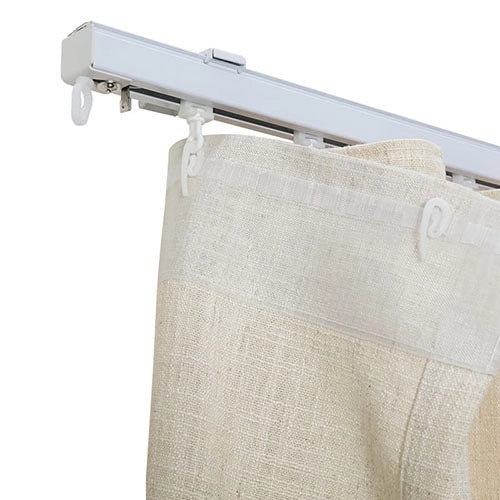
Pros:
- Consistent, smooth look
- Ideal for large windows
- Popular in both residential and commercial projects
Cons:
- Requires specific tracks and hardware
- Limited to compatible systems
Best for: Modern interiors, offices, and large-scale window treatments.
Final Verdict: Choosing the Right Style
No single curtain heading style is universally “best.” Your choice should consider:
- The style of the room (formal vs. casual, modern vs. traditional)
- Curtain fabric and weight
- Light control and stack back needs
- Installation preferences and budget
| Heading Style | Key Feature | Ideal For |
| Pinch Pleat | Classic elegance | Traditional living/dining rooms |
| 4-IN-1 | Modern flowing folds | Contemporary spaces |
| Grommet / Eyelet | Sleek minimalism | Casual modern rooms |
| Rod Pocket | Simple, soft gathers | Bedrooms, casual areas |
| Tab Top | Relaxed, easy-to-hang | Kitchens, informal spaces |
| Inverted Box Pleat | Tailored, structured | Formal living/dining rooms |
| Ripple Fold | Smooth, consistent folds | Large windows, modern interiors |
At LuxDrape
At LuxDrape, we offer all these customizable heading options—pinch pleat, wave, grommet, tab top, rod pocket, inverted box pleat, and ripple fold—so you can achieve the perfect look for any room. Our expert team ensures each curtain is tailored to your space, fabric choice, and aesthetic vision.

Discover our full collection of custom curtains and elevate your home’s style with LuxDrape’s high-quality, easy-to-install window treatments.
FAQ
Q: Which curtain heading style is easiest to install?
A: Grommet, tab top, and rod pocket styles are the simplest, sliding directly onto a curtain rod.
Q: Which style is best for heavy fabrics?
A: Pinch pleats, double/triple pleats, and inverted box pleats handle heavier fabrics well.
Q: Can I mix heading styles in the same room?
A: Yes! For example, a wave header on living room drapes and a tab top for kitchen curtains can create varied, cohesive aesthetics.
Q: Do all styles provide full blackout?
A: Styles like grommet and tab top may let light through gaps. For full blackout, pinch pleats or wave headings with blackout lining are ideal.
Random Articles

The two-story great room redesign came to life with our custom double-height curtains — from the ...
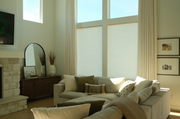
Discover the ultimate guide to curtain heading styles. Explore pinch pleats, 4-in-1, grommet, rod...
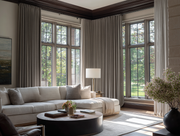
Discover the best curtains for winter to keep your home warm and energy-efficient. From thermal c...
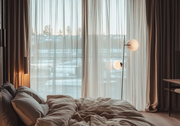
Discover how to choose the best bedroom curtains for your space. From color and fabric to hanging...

